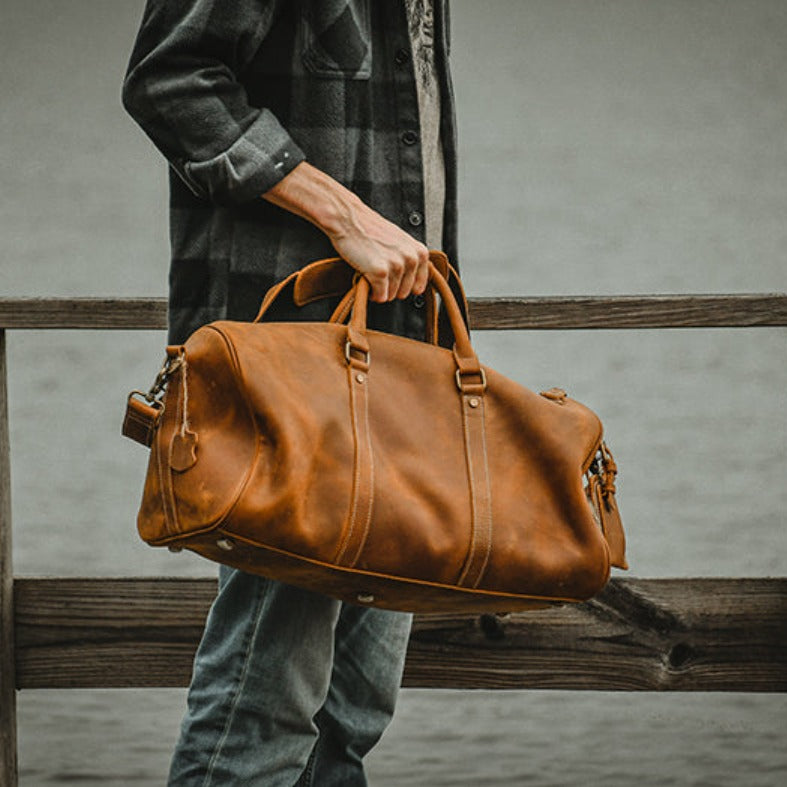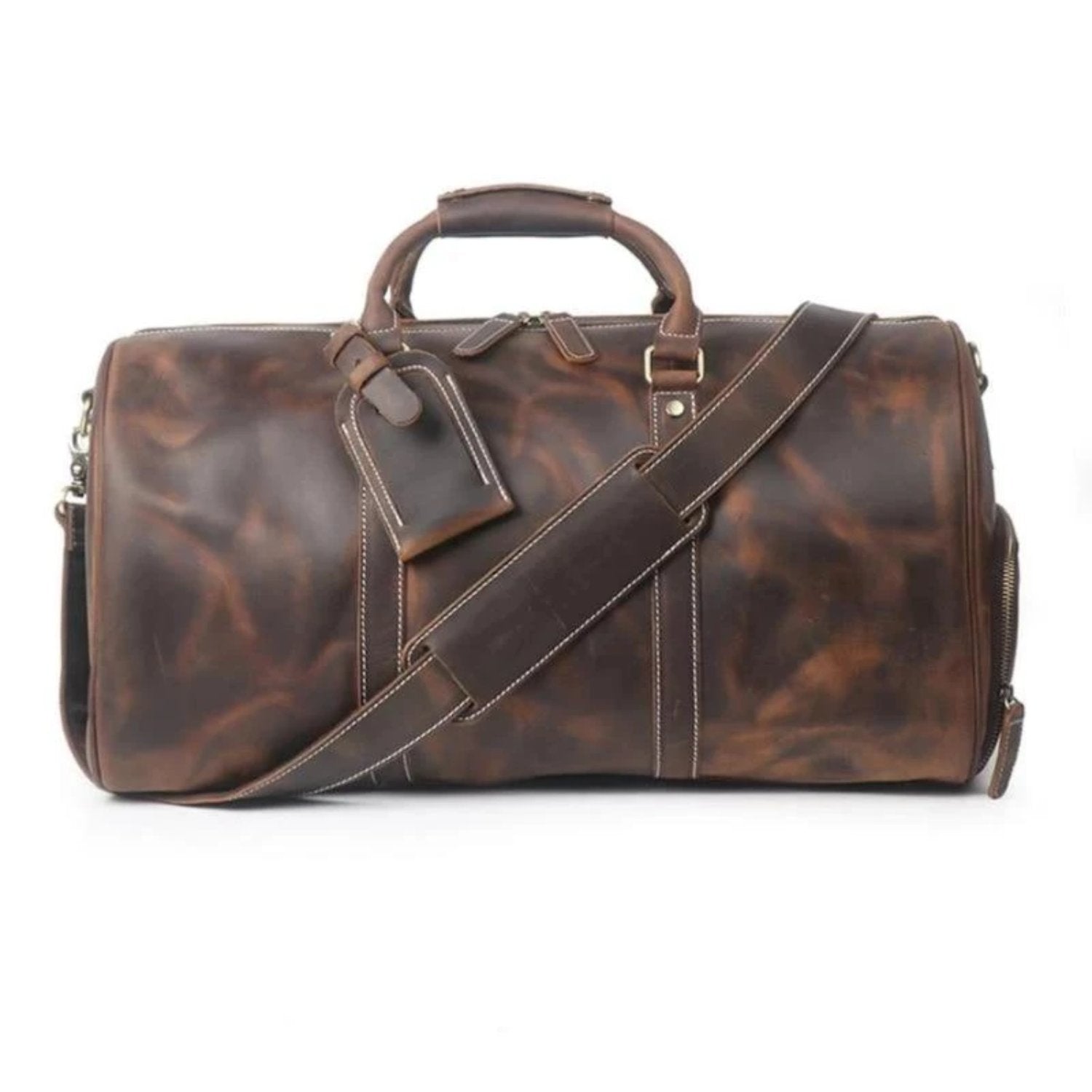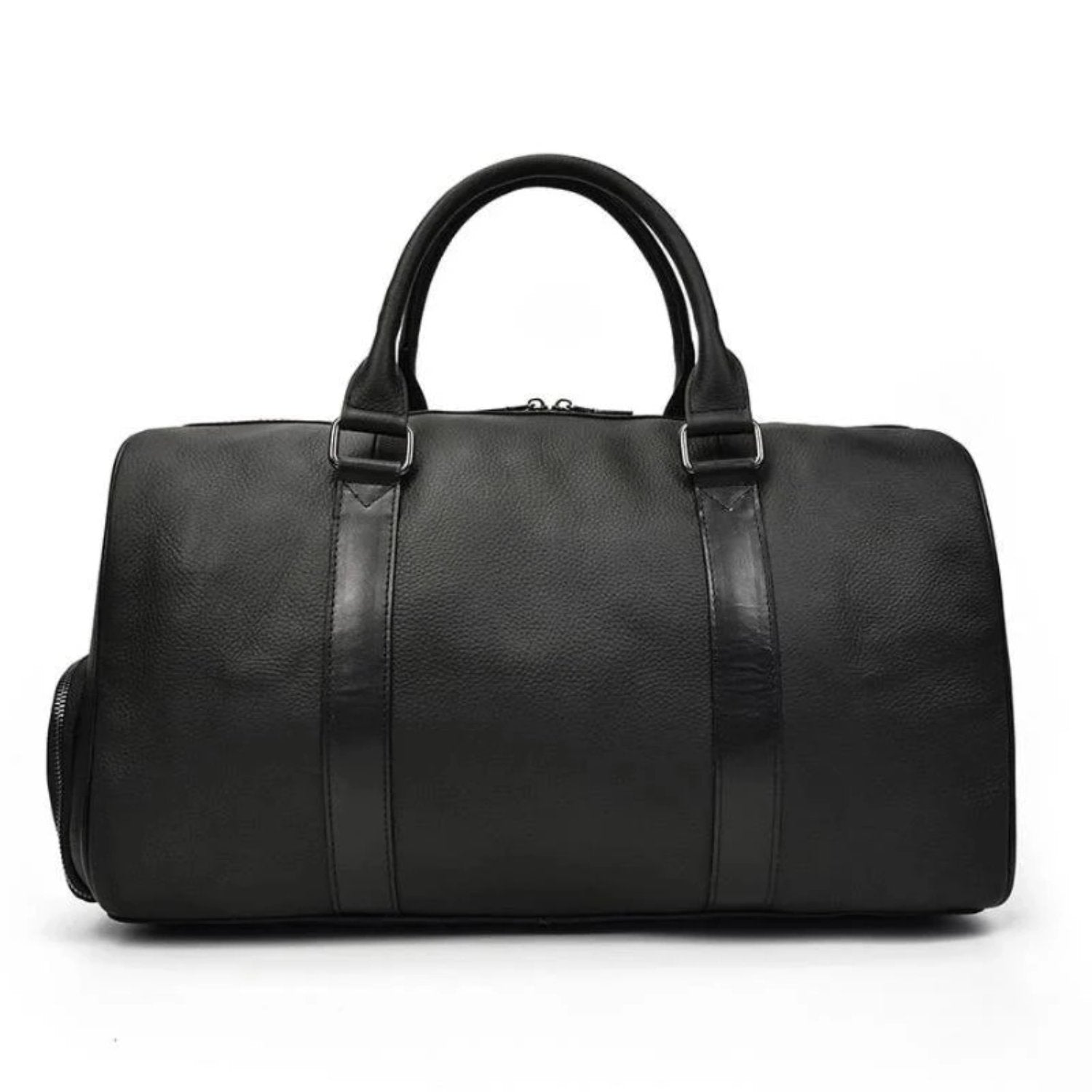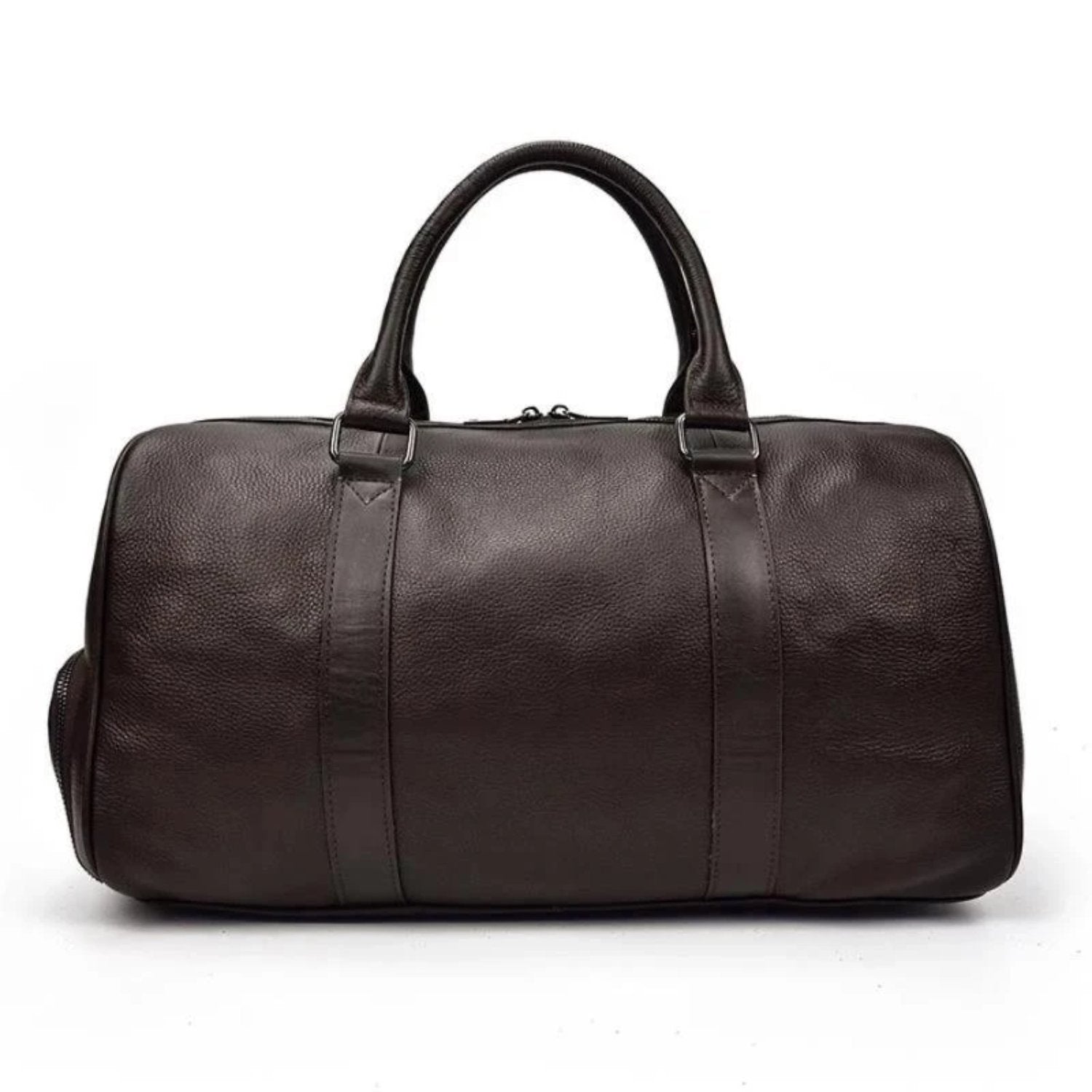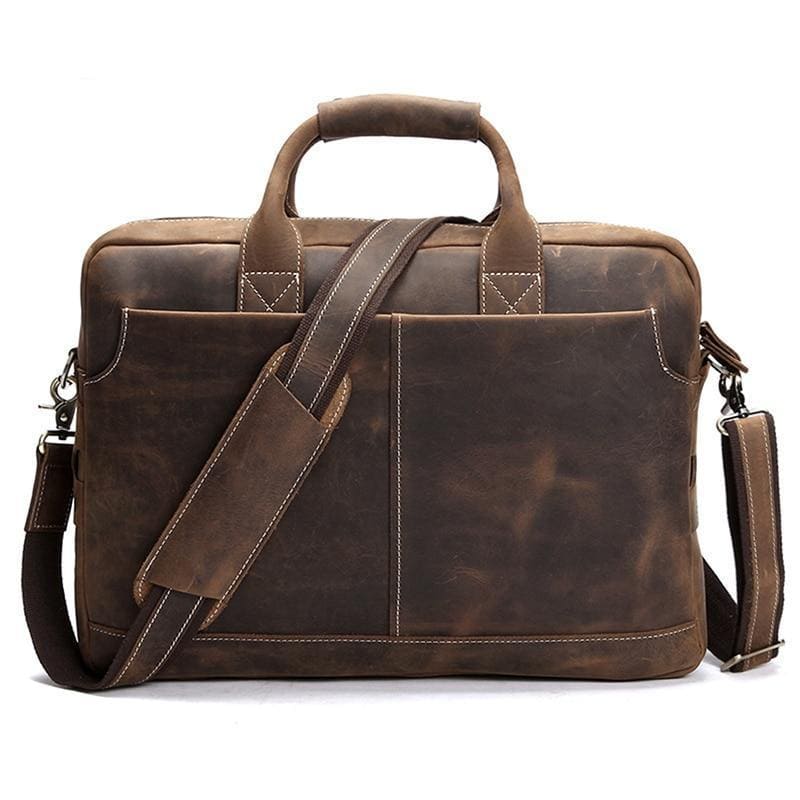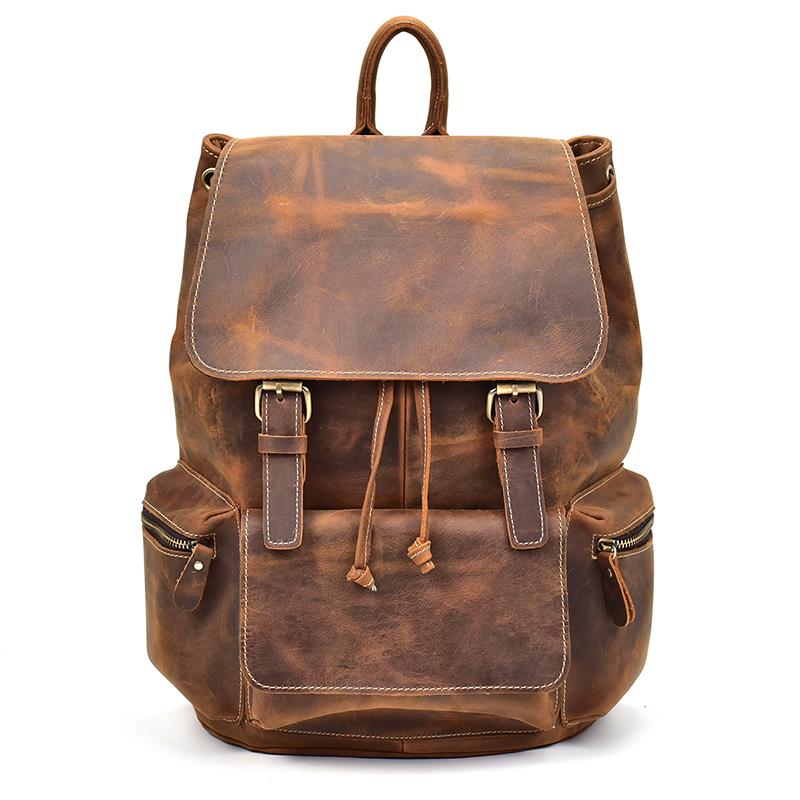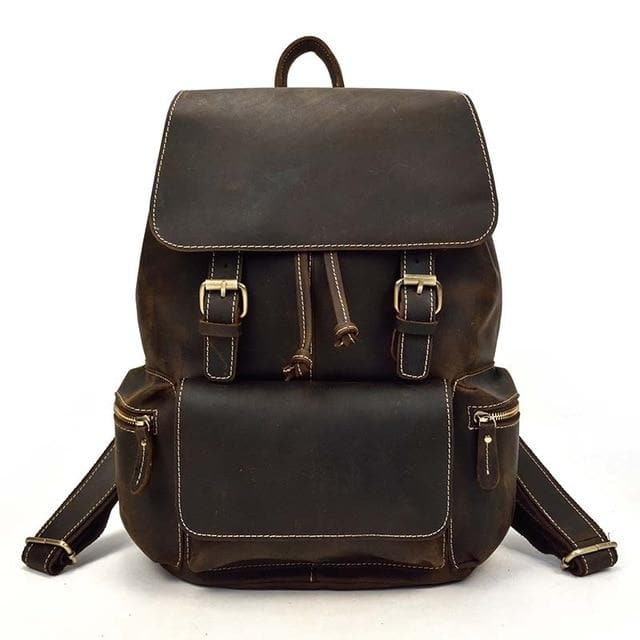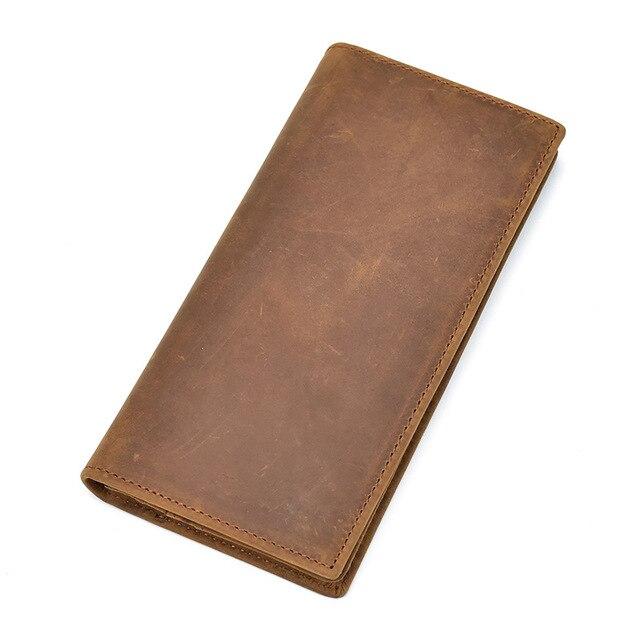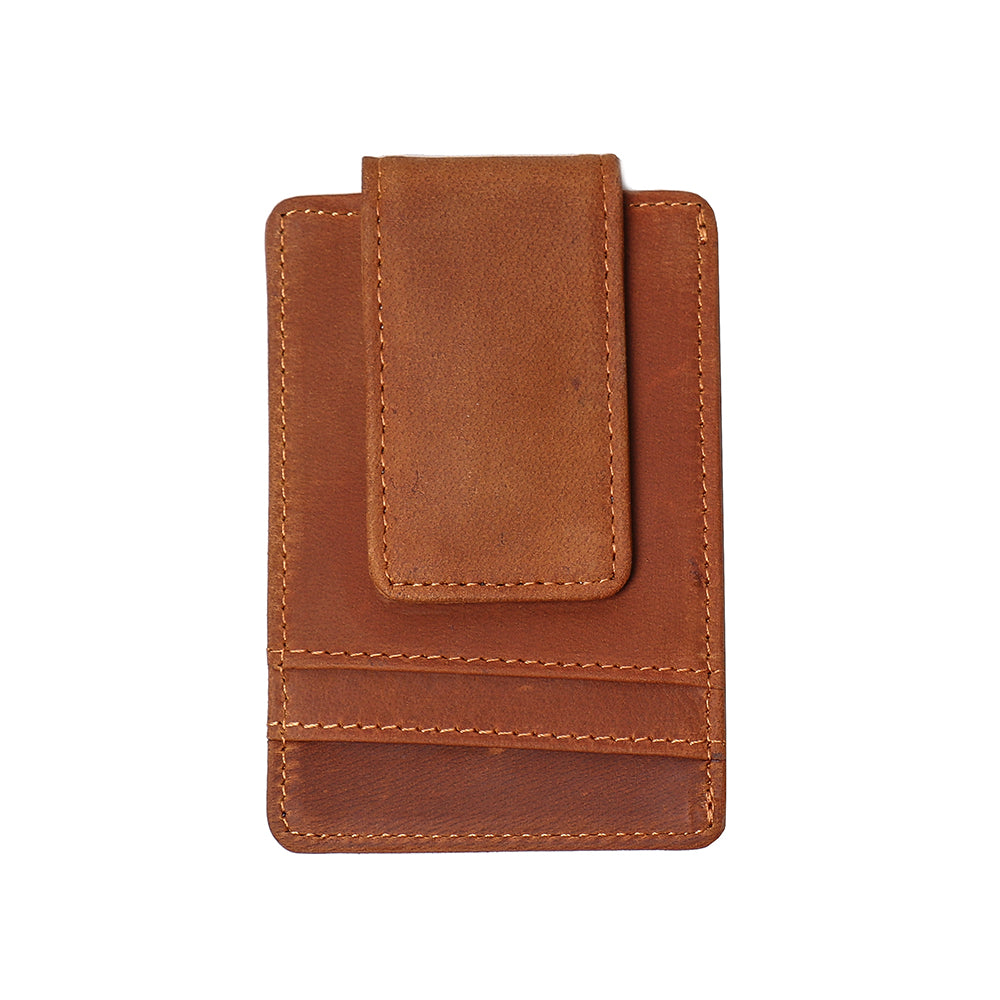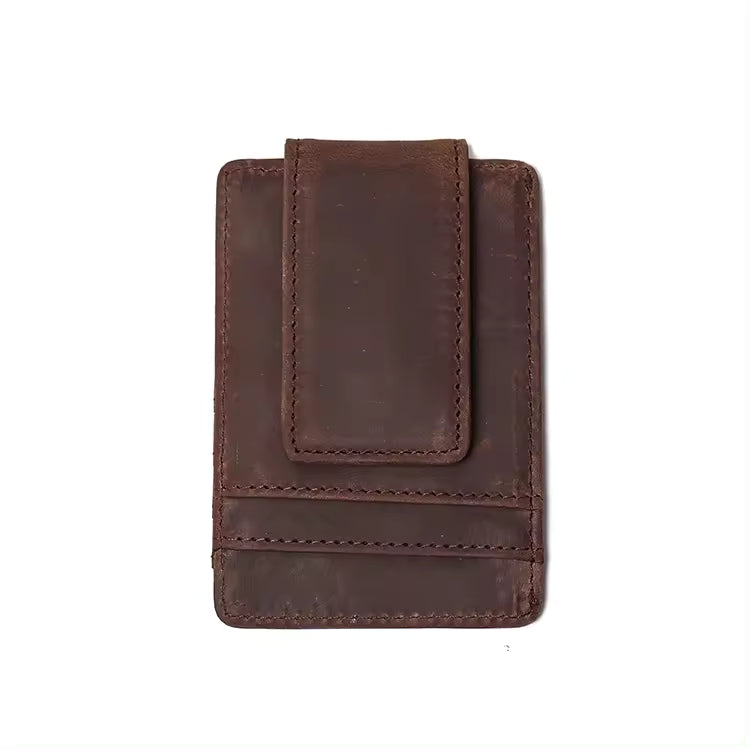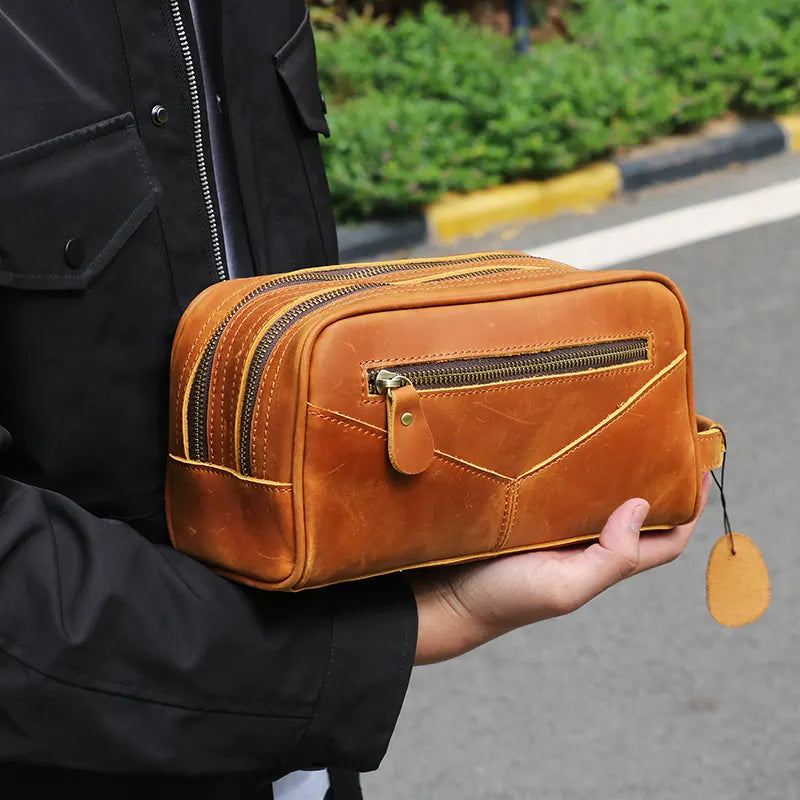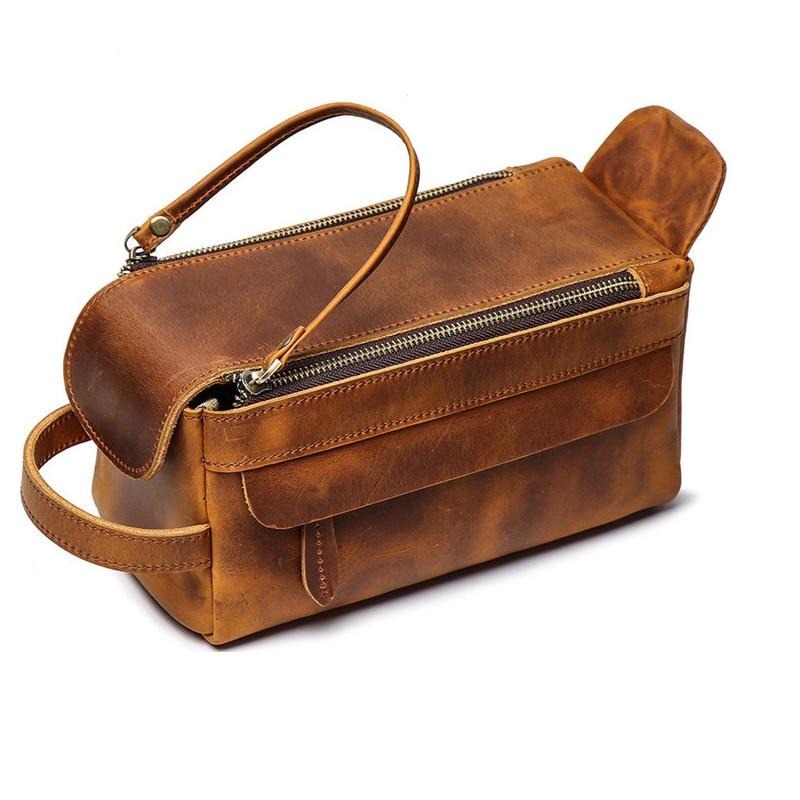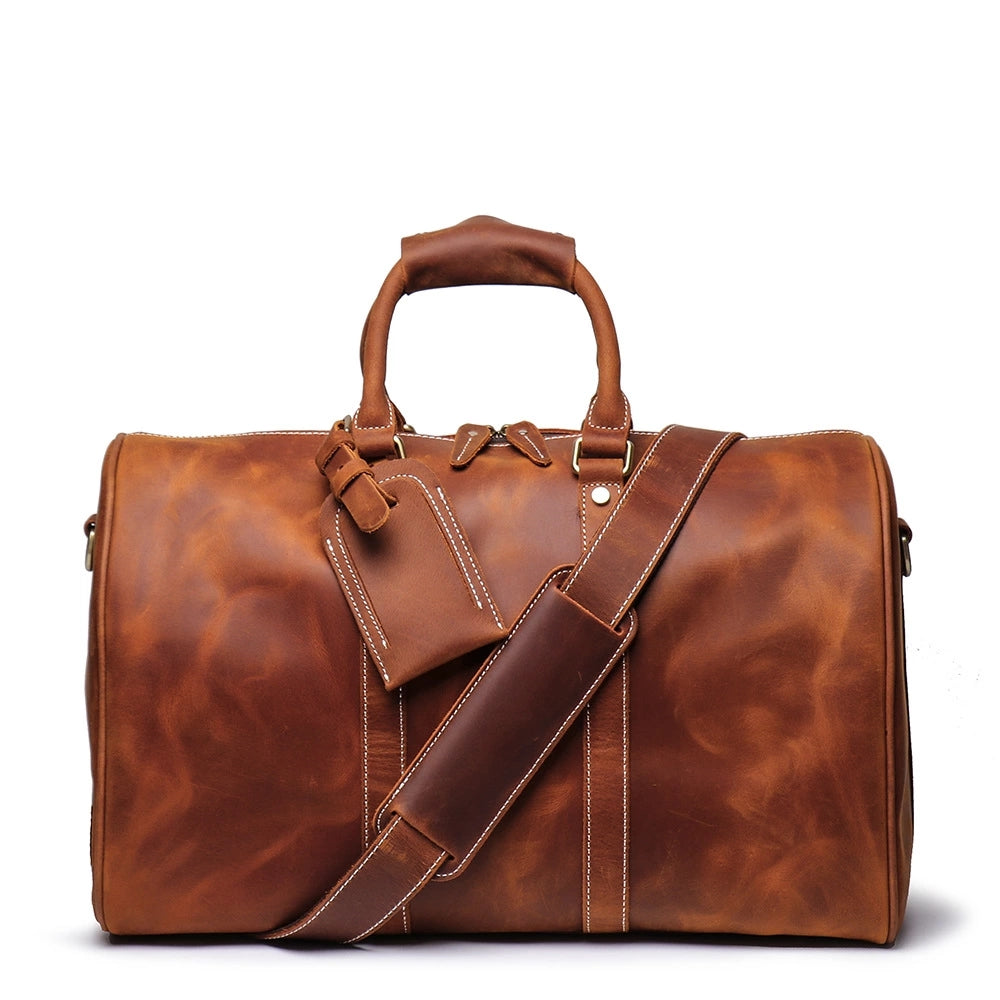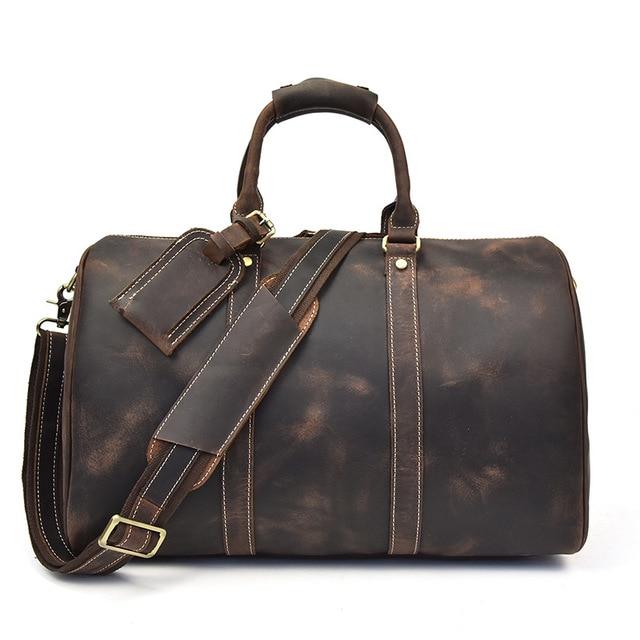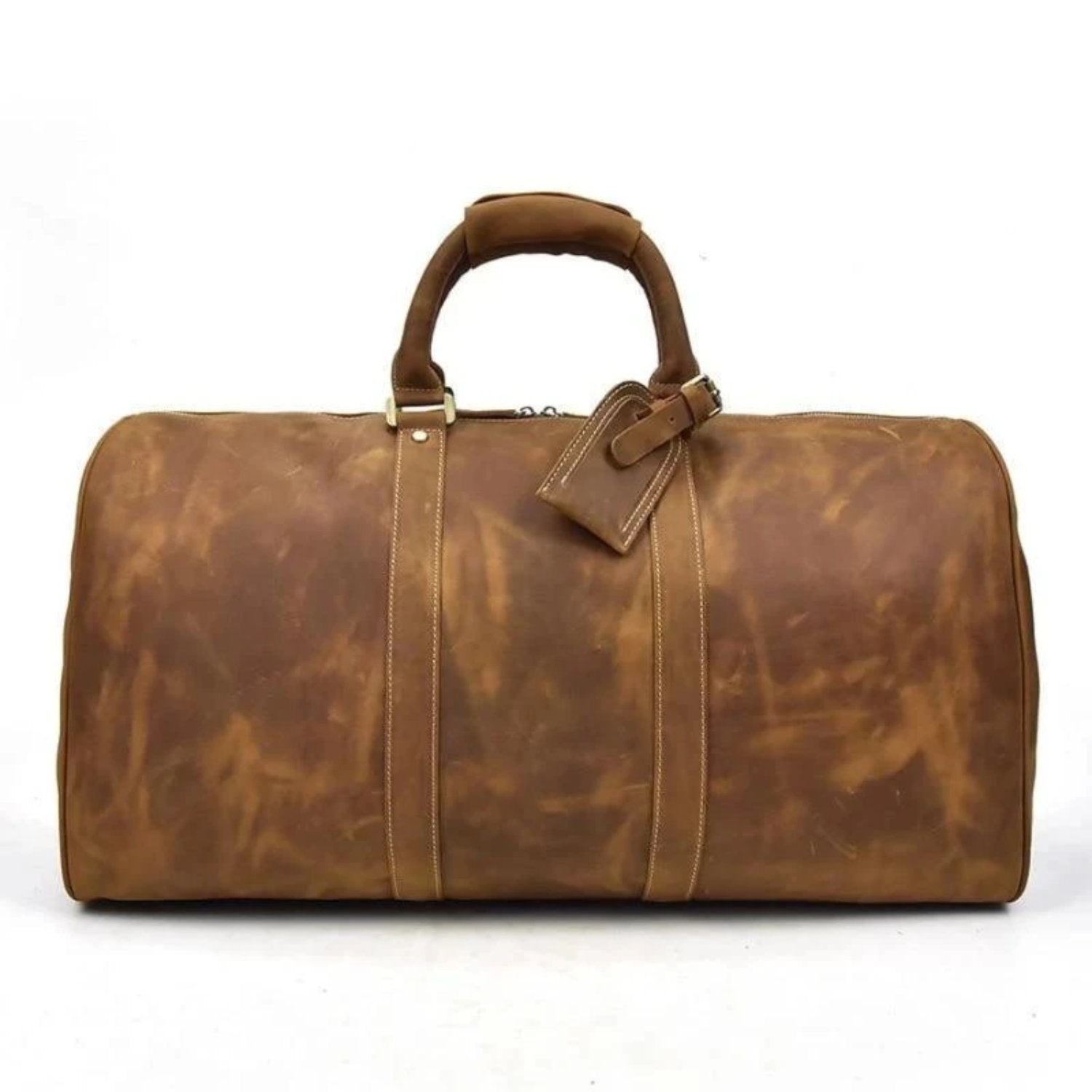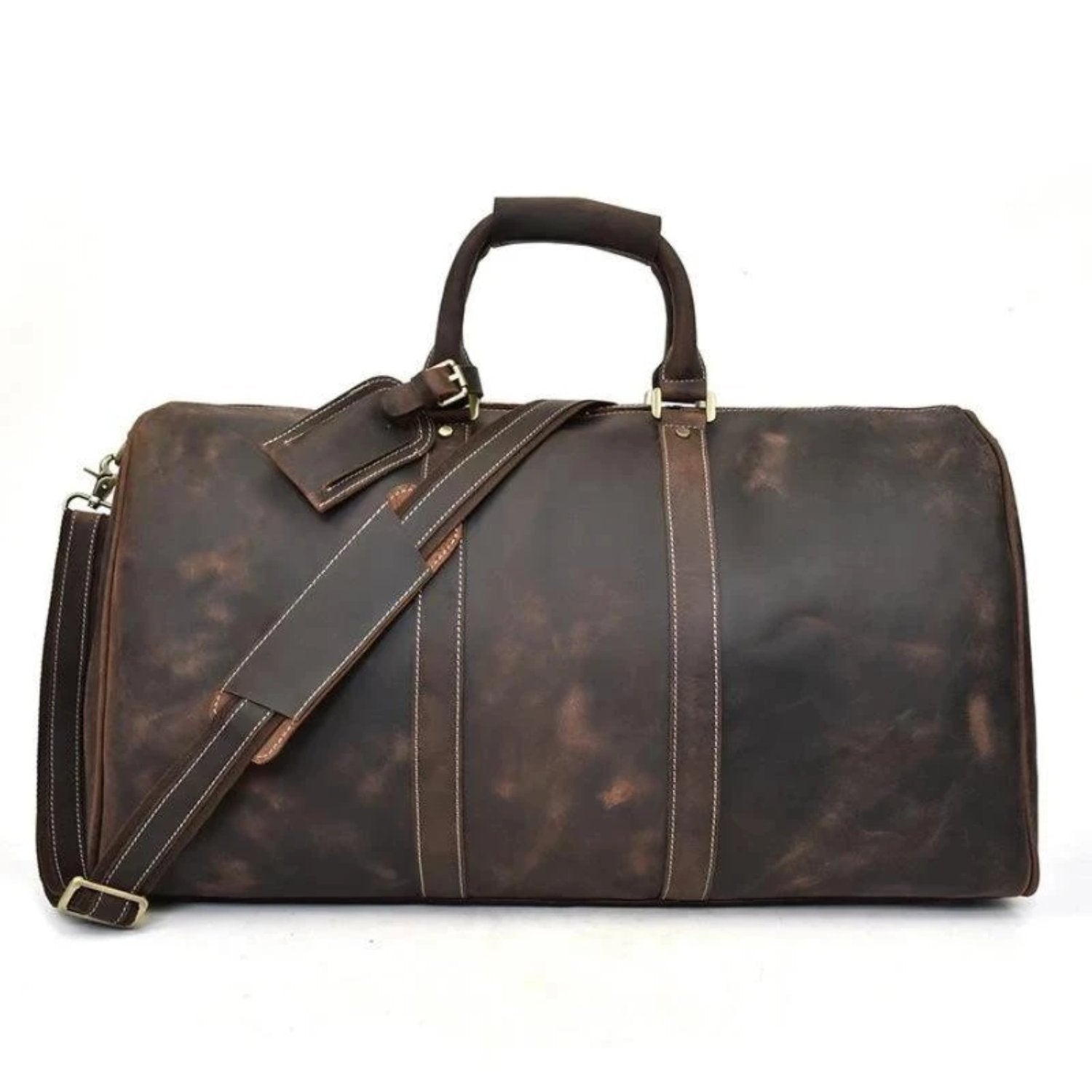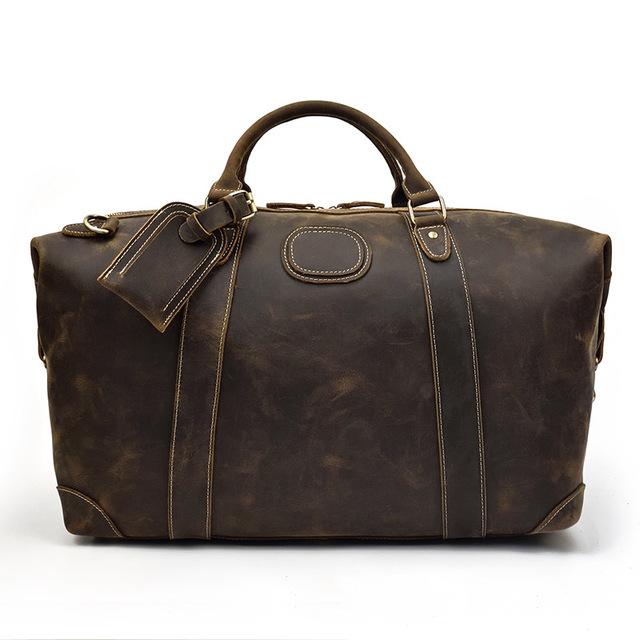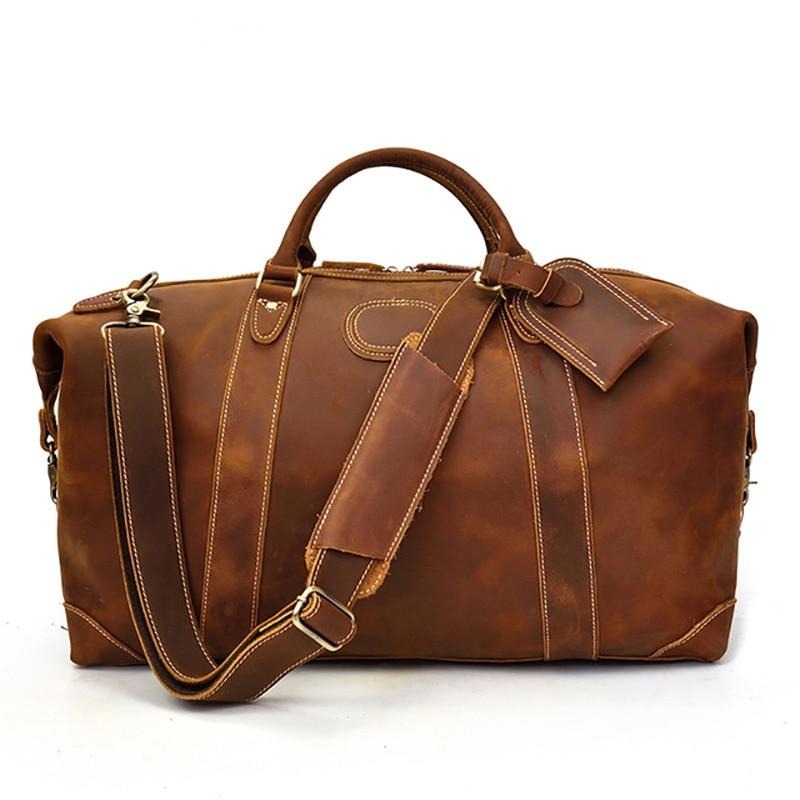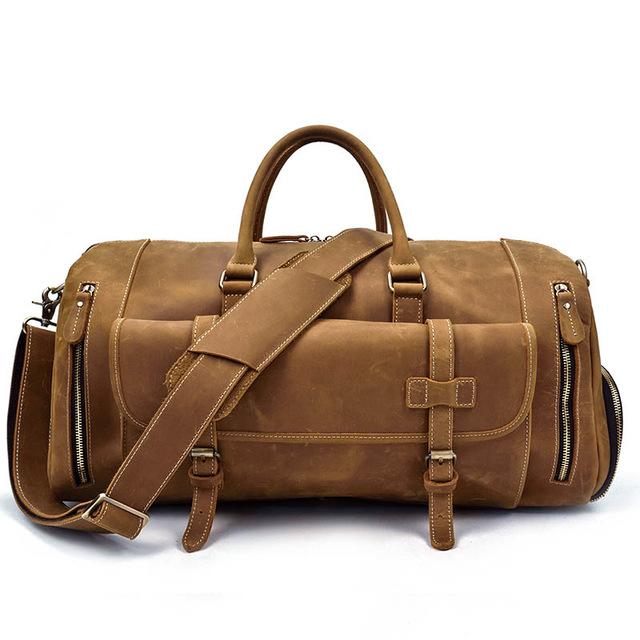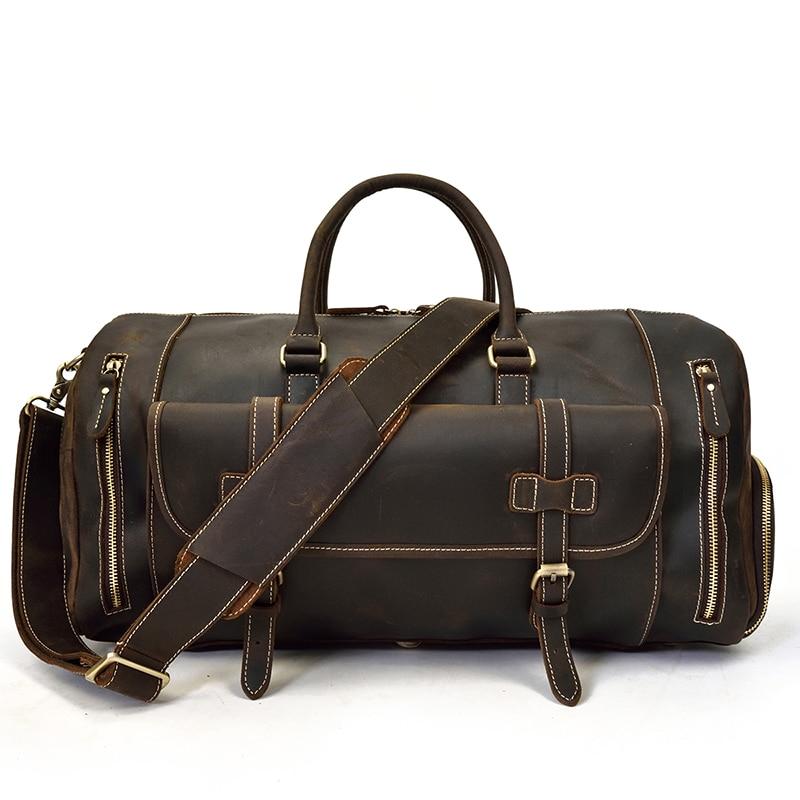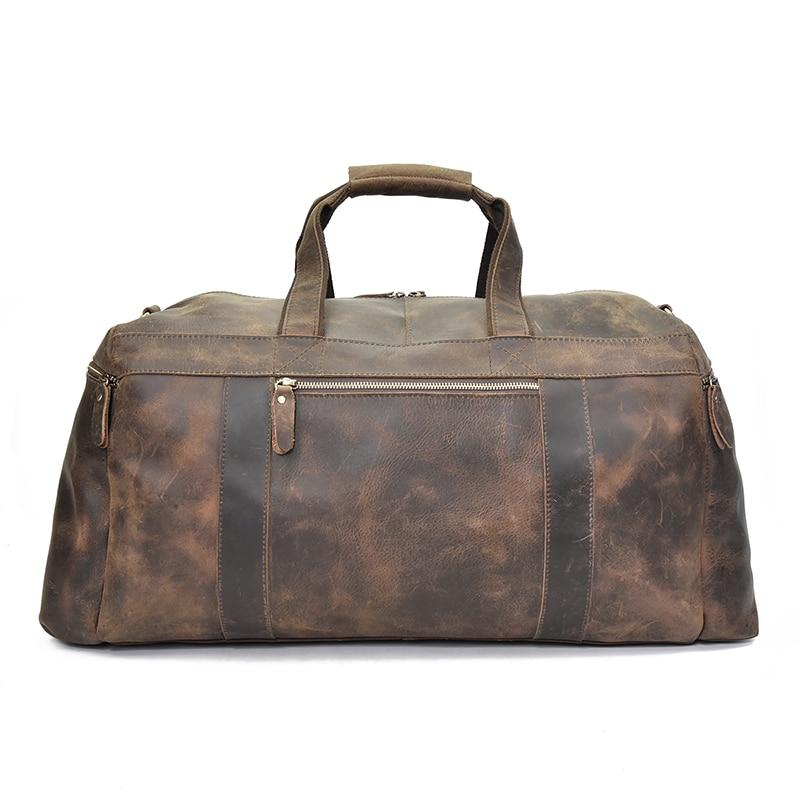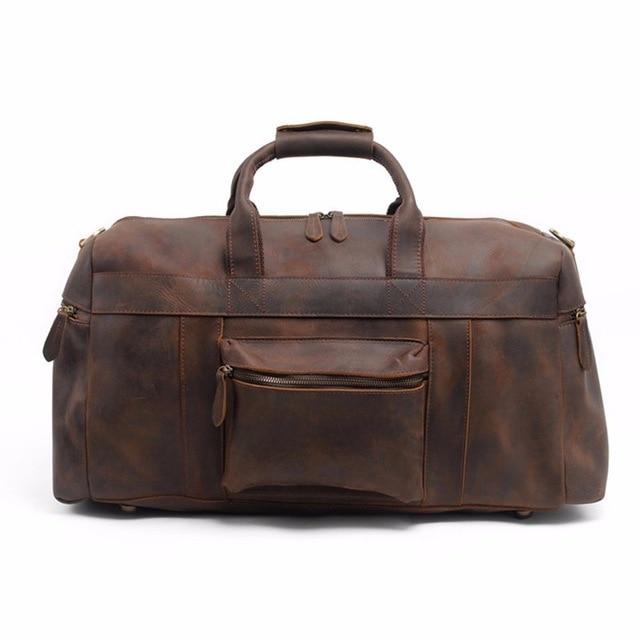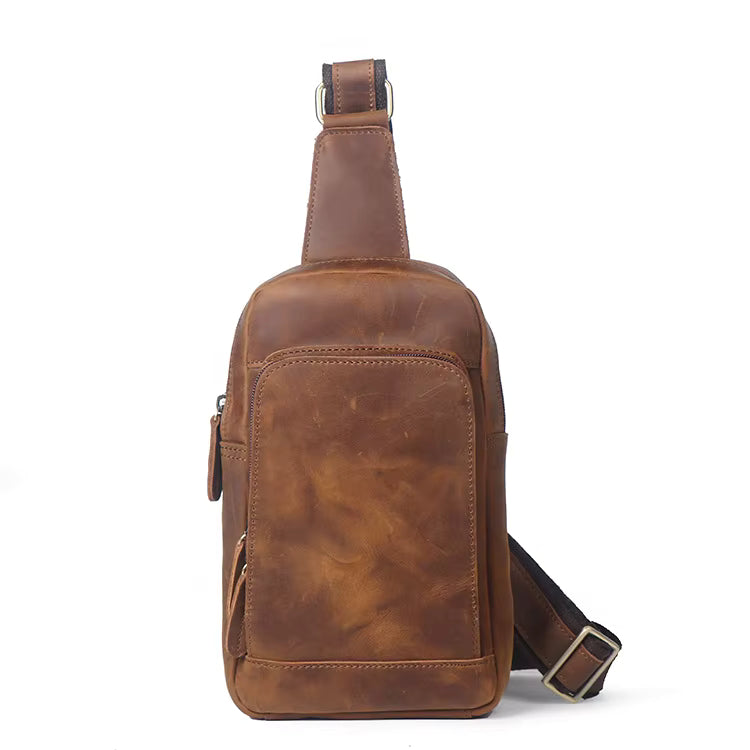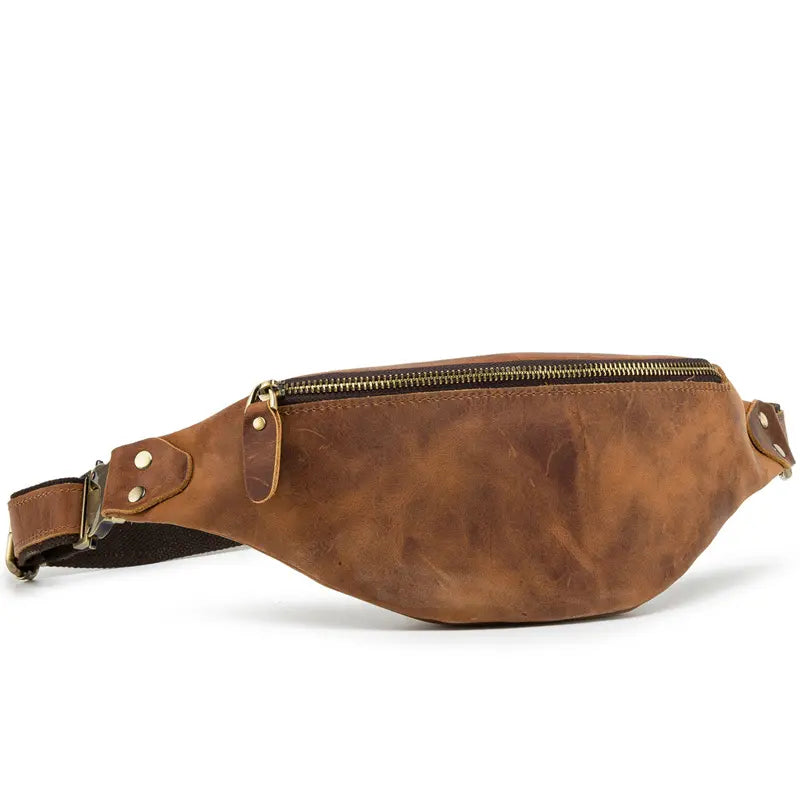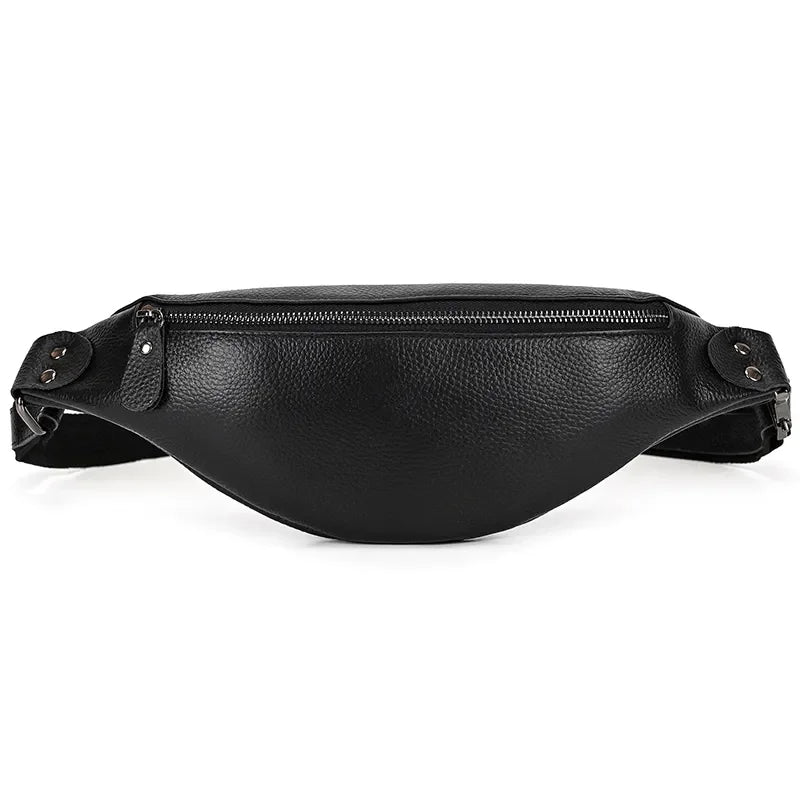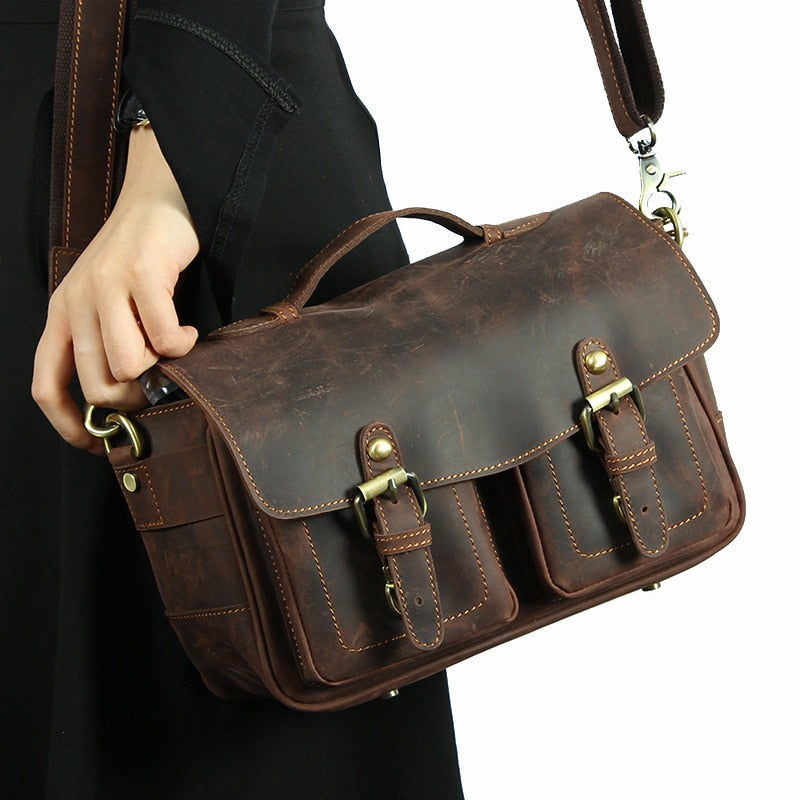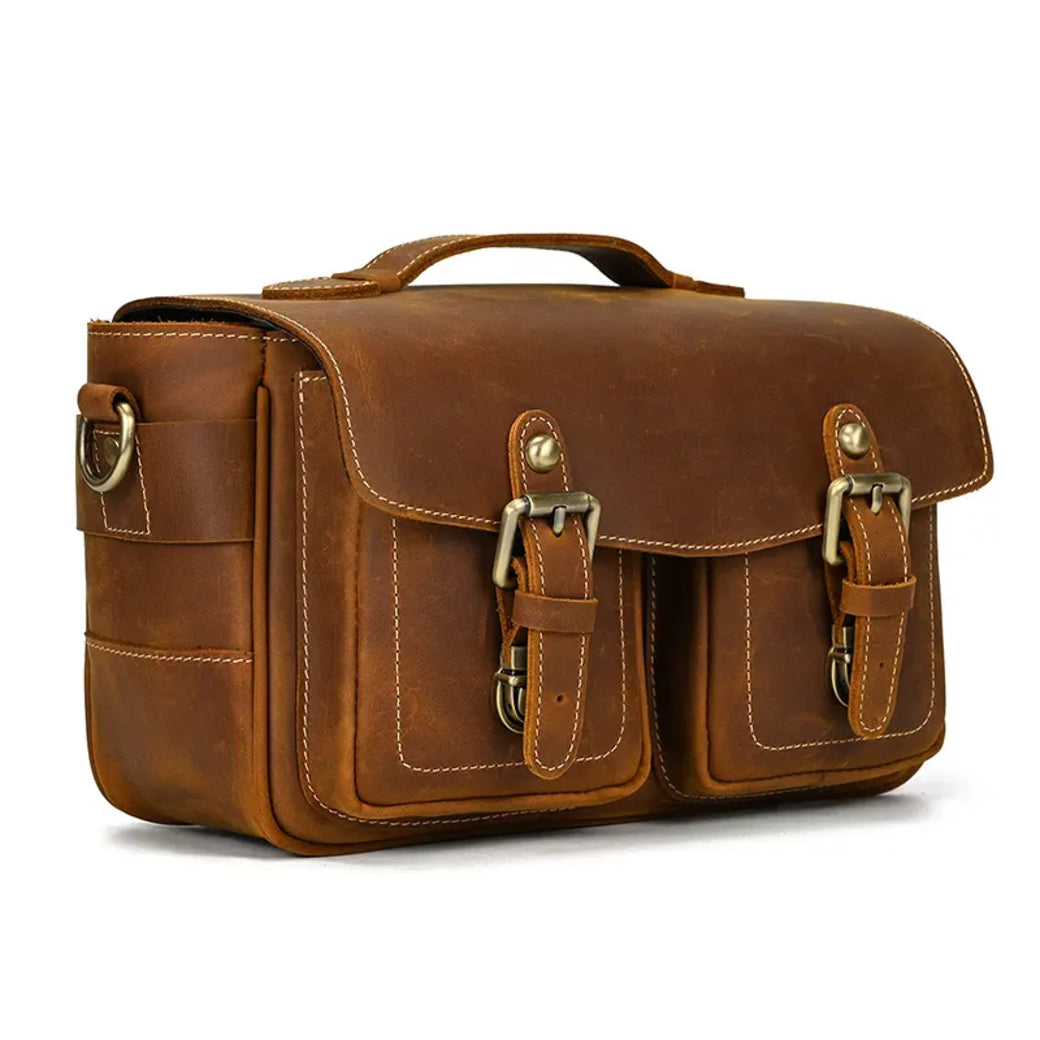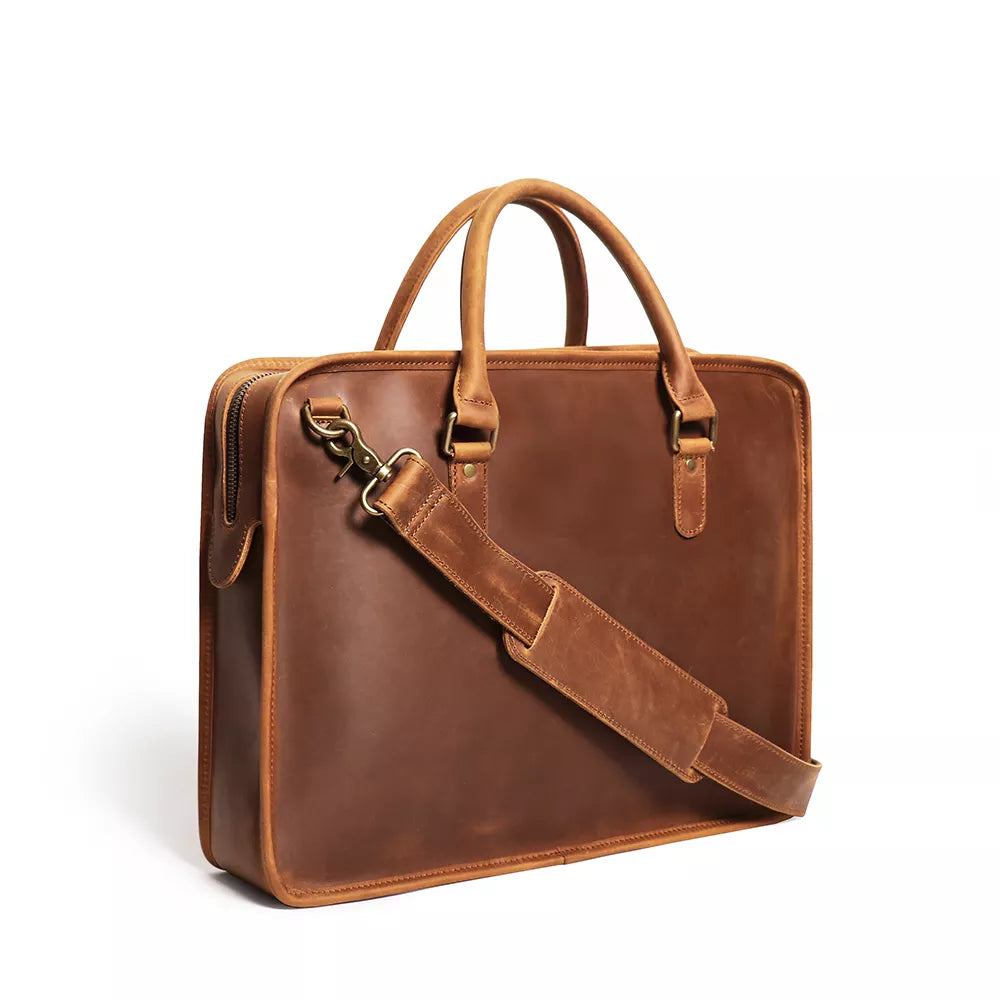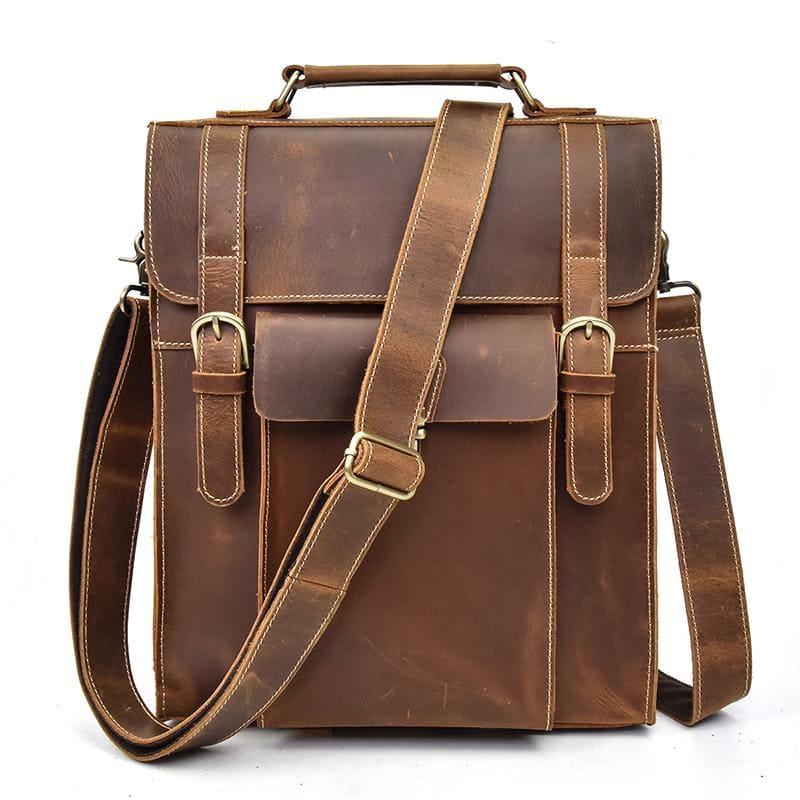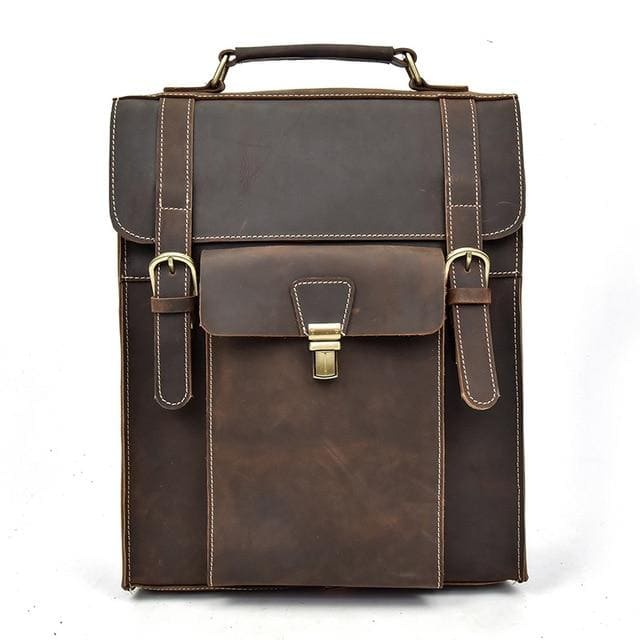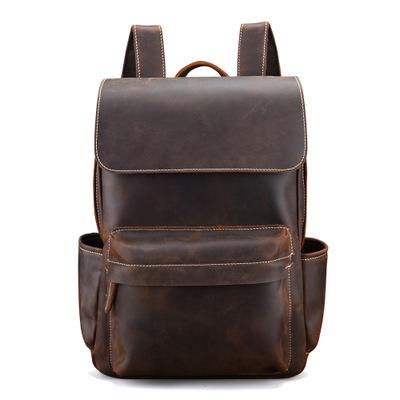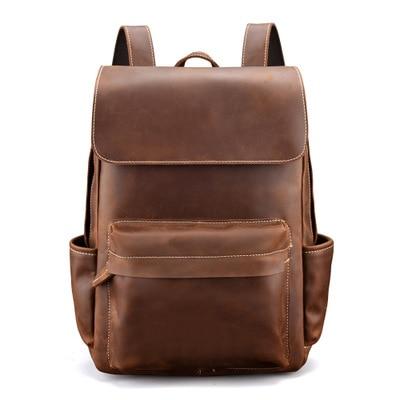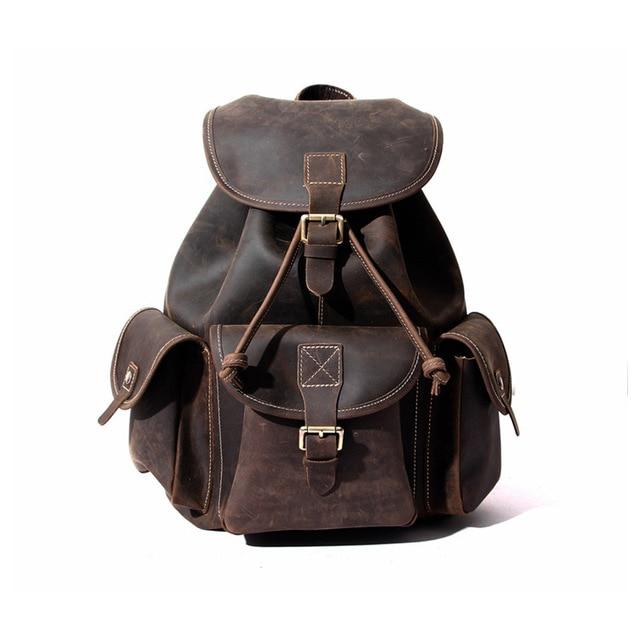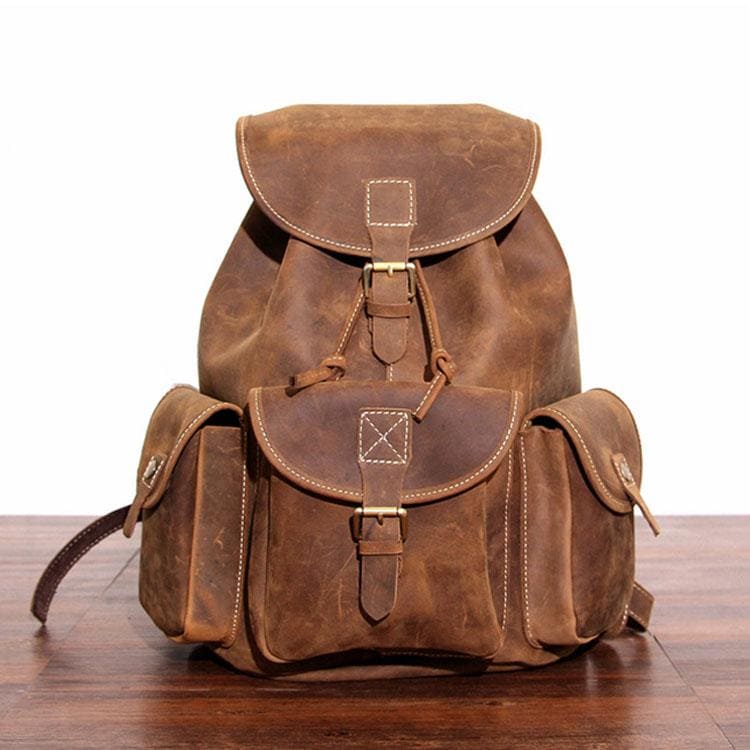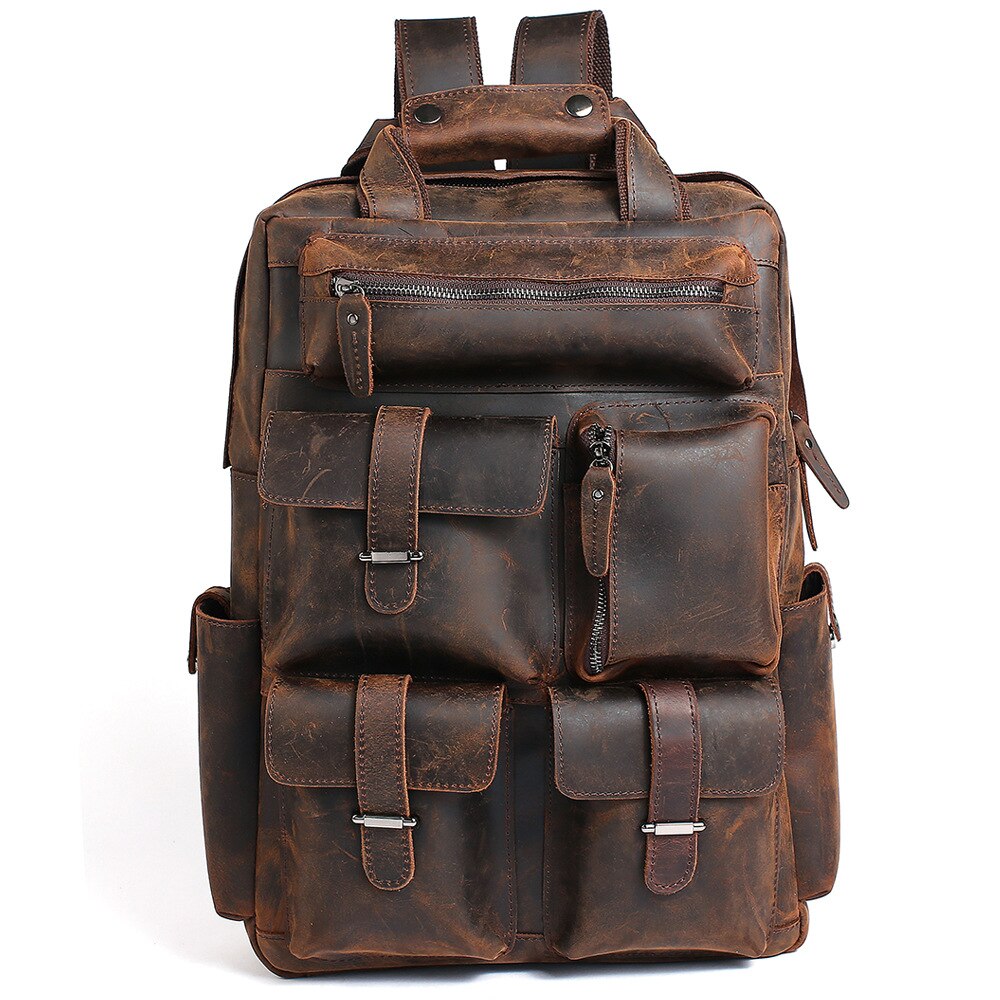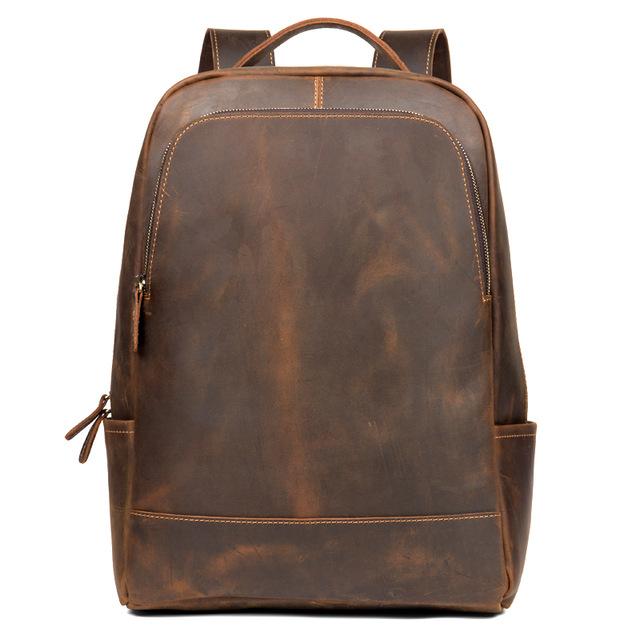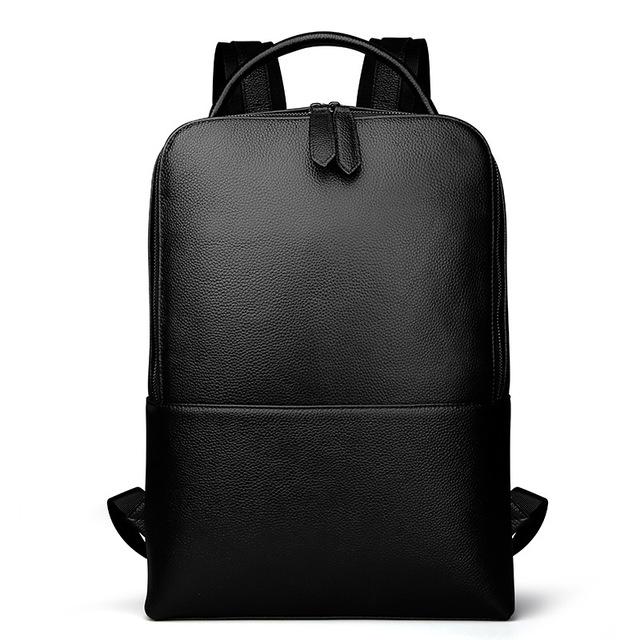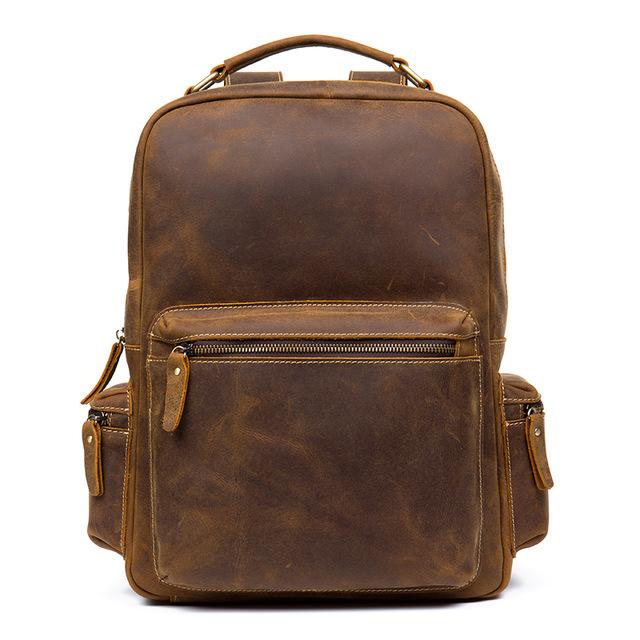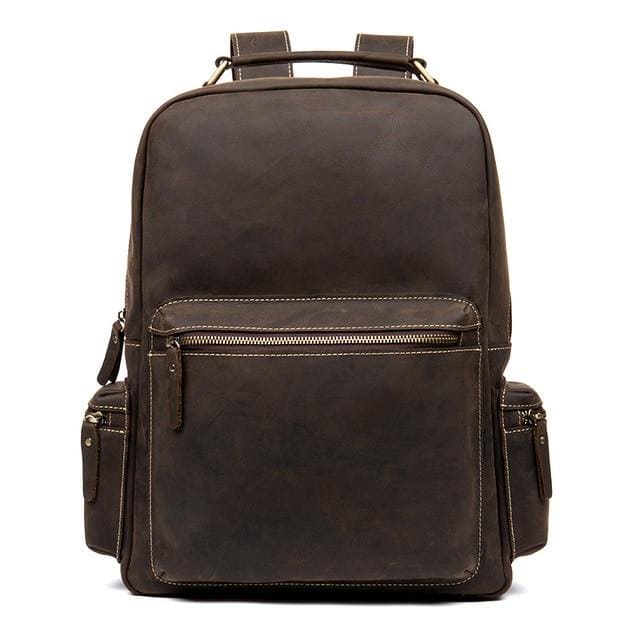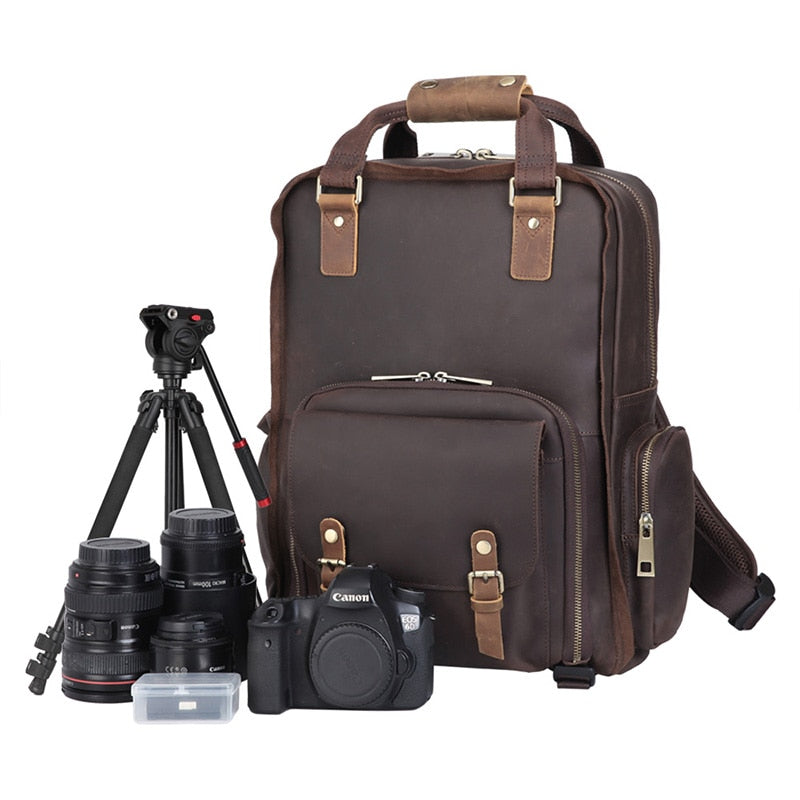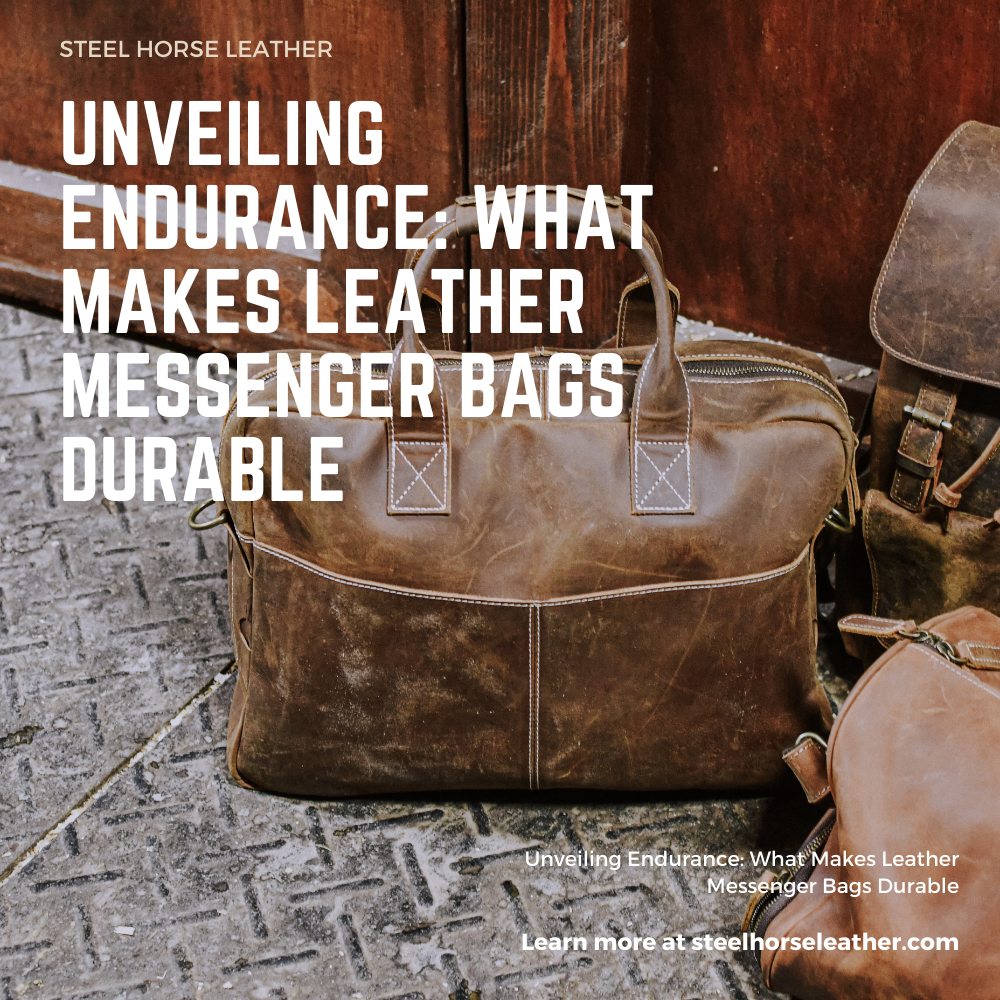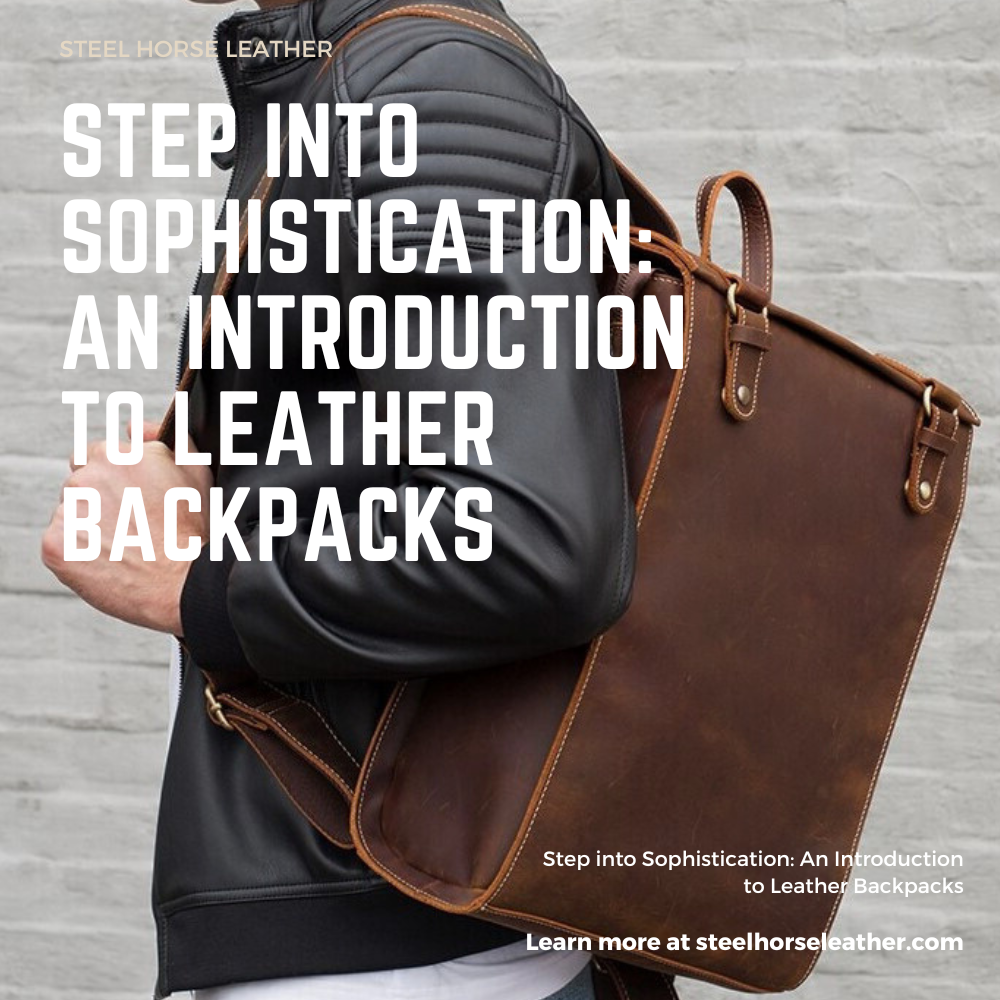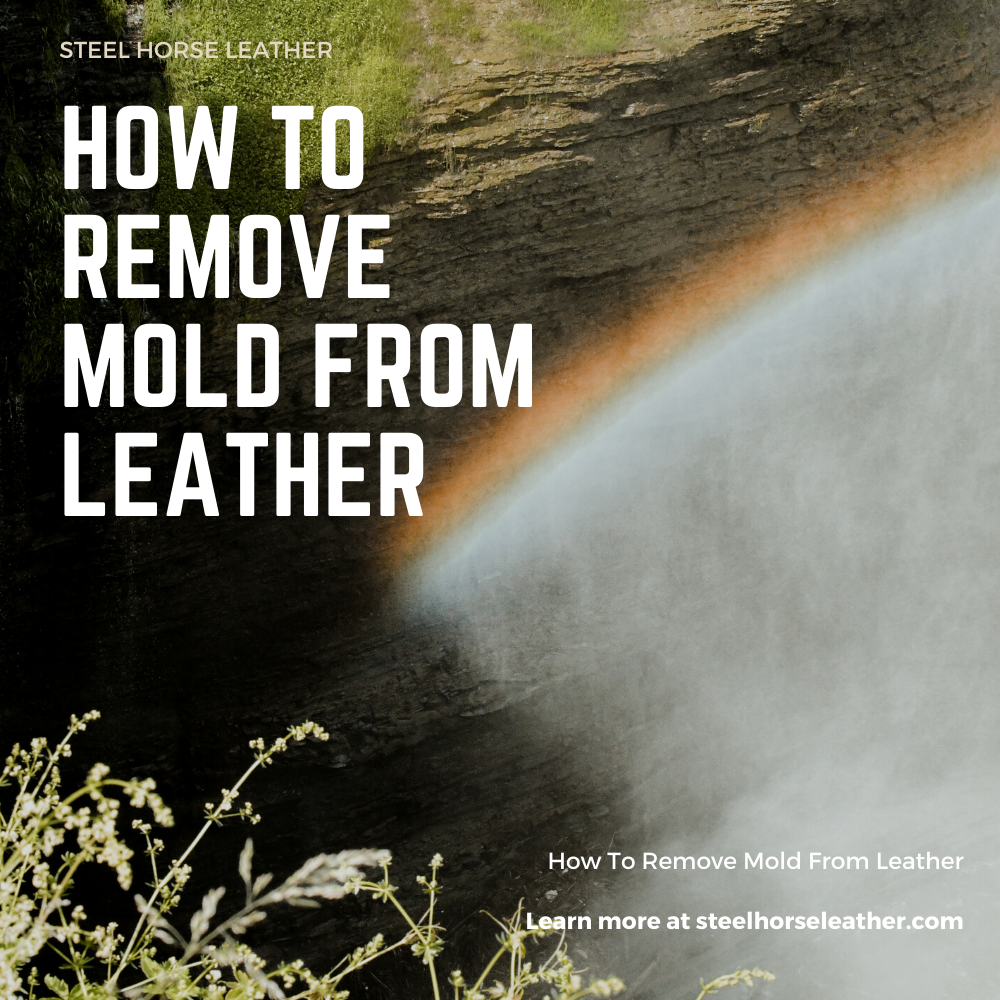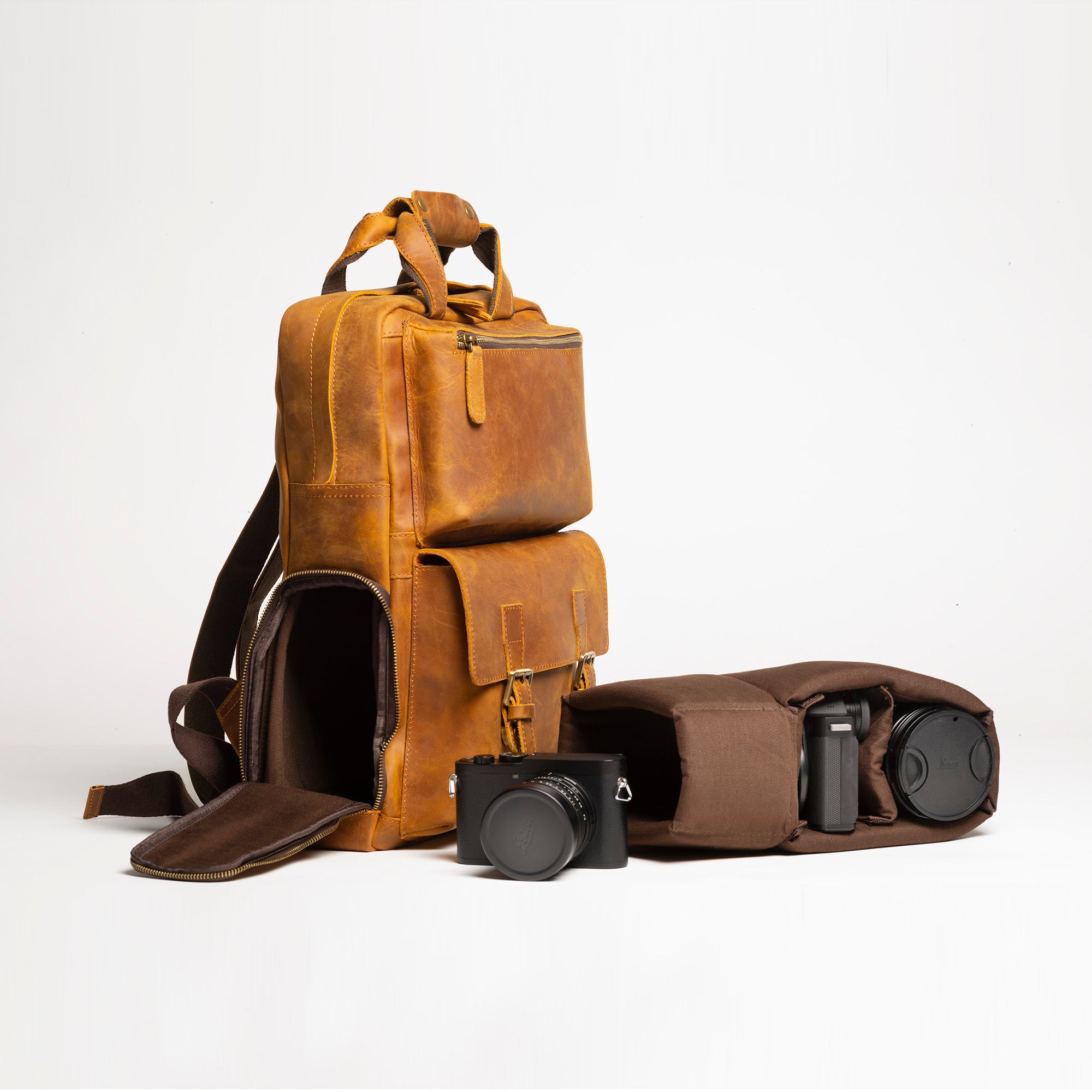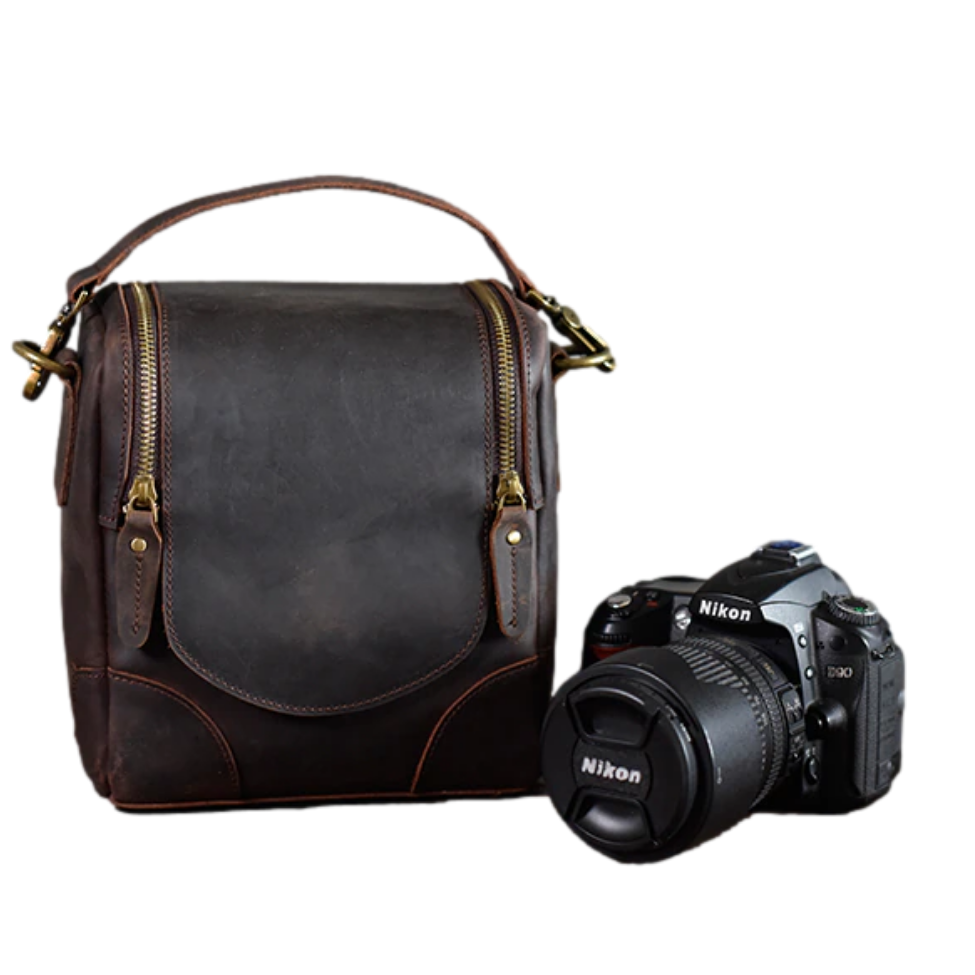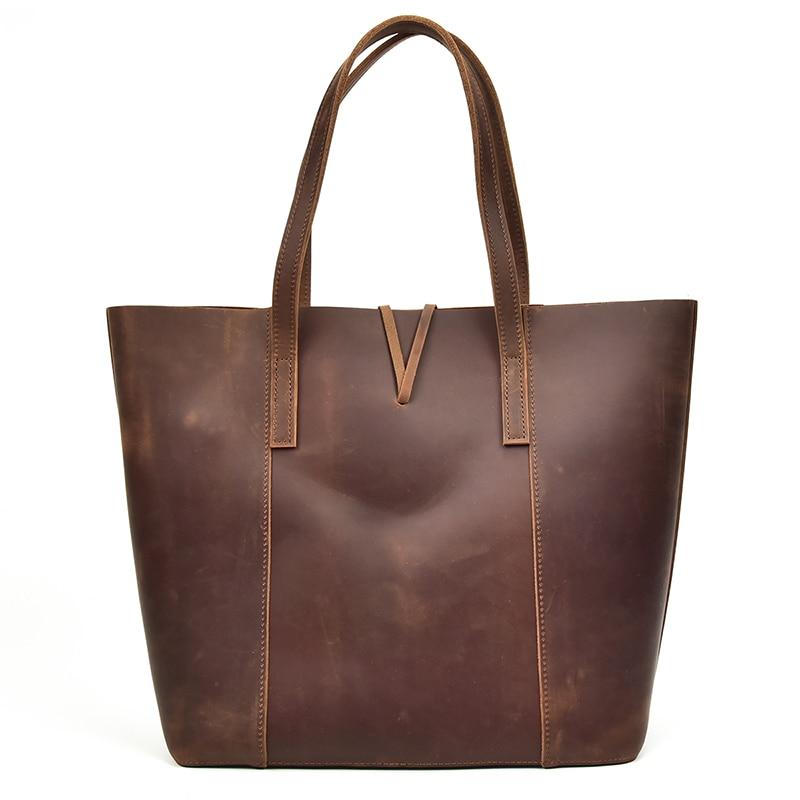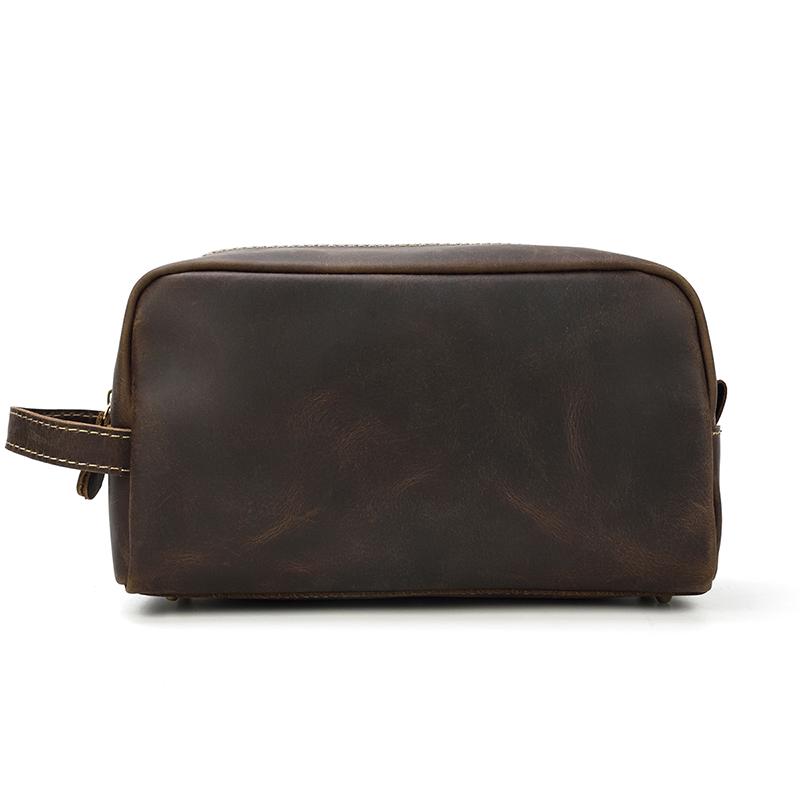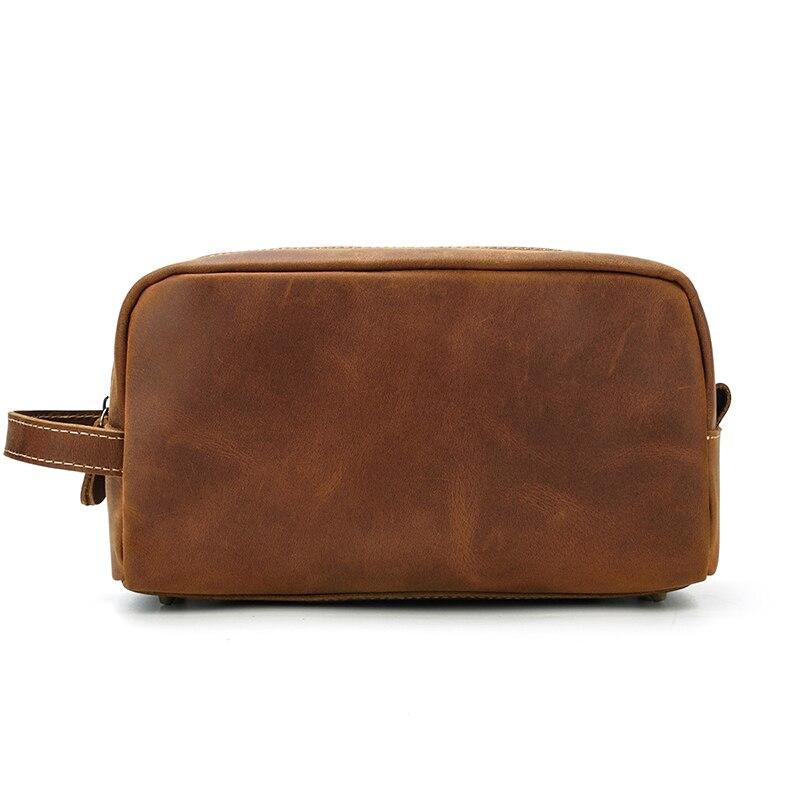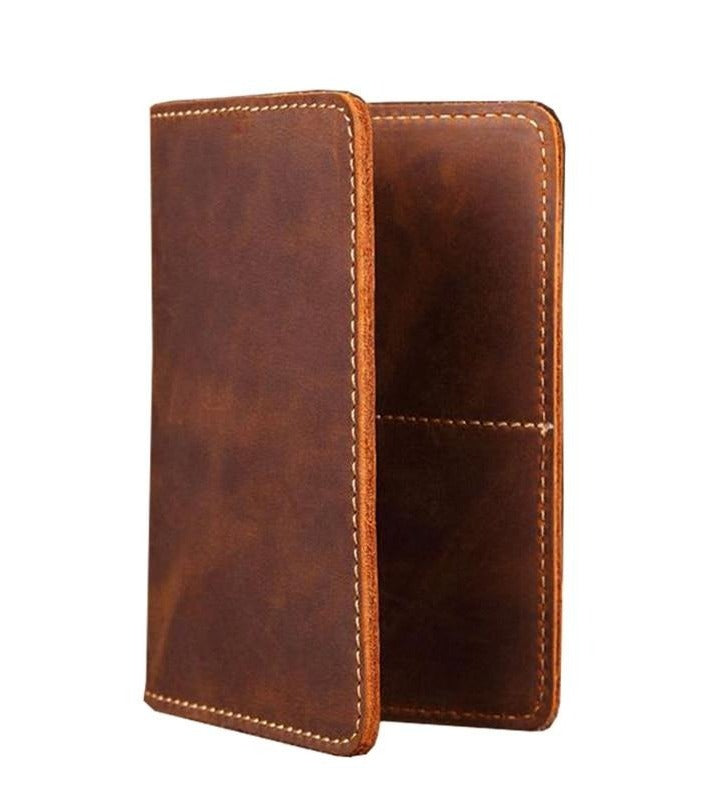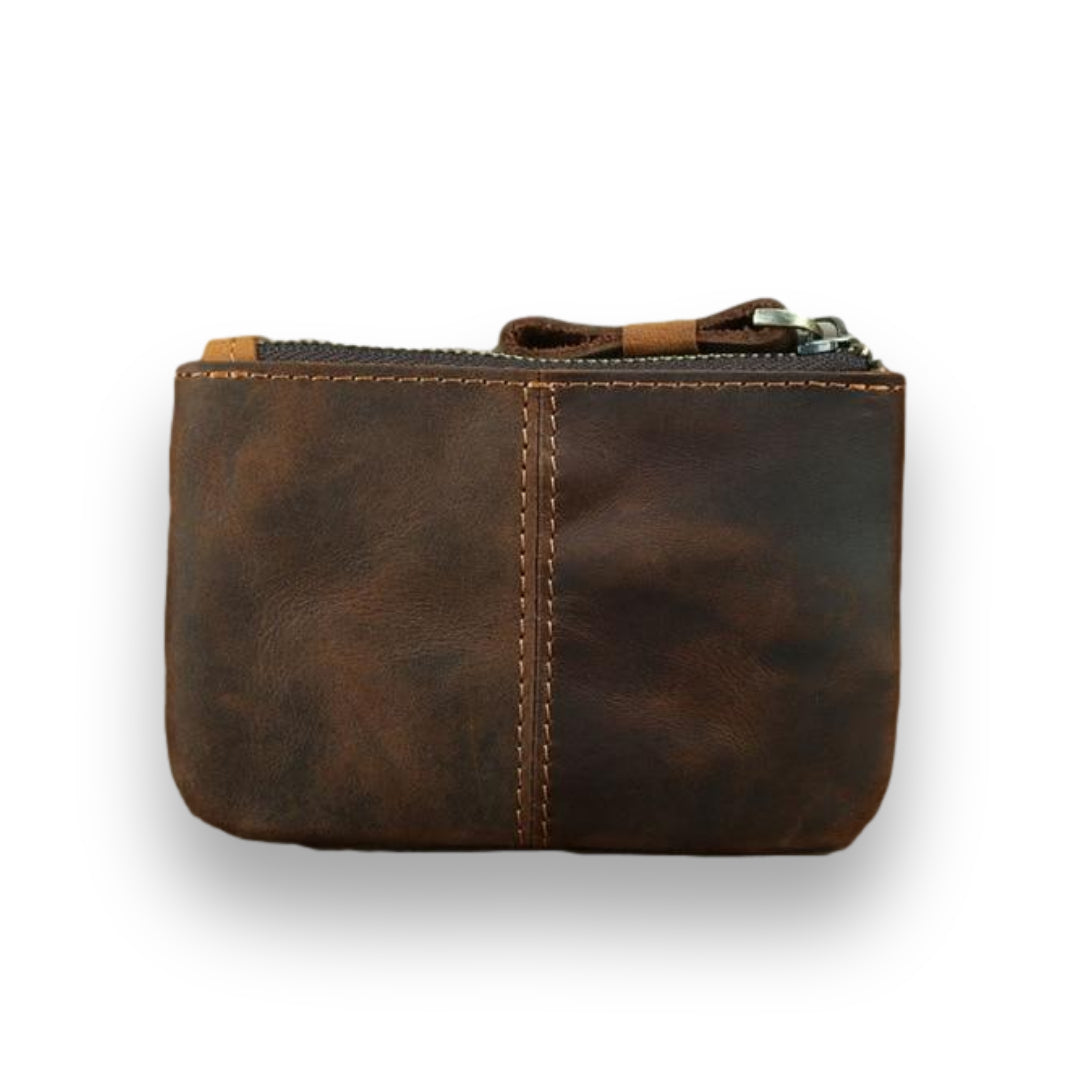If you're thinking about adding leather to your wardrobe, you might want to know a few facts about leather first. This blog provides a basic overview, as well as facts about leather and its production, covering everything from the animal it comes from to the process of making it into products. By understanding the facts about leather, you will have the capacity to make an informed decision about whether or not it's the right material for your needs!
Key Takeaways
-
Full-grain leather is the highest quality and most durable option, lasting up to five times longer than other types, making it a worthwhile investment despite higher upfront costs
-
The leather industry is a massive global market worth over $53.8 billion annually, with the United States ranking as the world's 8th-largest producer of leather products
-
Leather can be an environmentally friendly choice as it's a renewable, natural resource that produces minimal emissions and can be recycled into new products
-
Proper care and conditioning are essential for maintaining leather goods—regular cleaning with appropriate products and protection from moisture and heat will significantly extend their lifespan
-
Different types of leather serve different purposes: cowhide offers flexibility and water resistance, while exotic leathers like salmon or ostrich provide unique textures and luxury appeal
Why Trust Our Leather Insights?
At Steel Horse Leather, we don't just write about leather – we live and breathe it every day. Our master artisans have dedicated their lives to perfecting the craft of leatherworking, using traditional methods passed down through generations to create handmade leather bags of exceptional quality. This hands-on experience with leather processing, from sourcing raw materials to the final finishing touches, gives us intimate knowledge of every aspect discussed in this article.
We've invested considerable time and effort in understanding the complete leather supply chain, thoroughly vetting leather providers for their sourcing and tanning practices. Our holistic approach to mapping where leather comes from and how it's processed means we have firsthand experience with the various grades, tanning methods, and quality indicators that many articles only cover theoretically. When we discuss the differences between full-grain, top-grain, and genuine leather, or explain the intricacies of the tanning process, we're drawing from years of practical experience working with these materials daily.
This real-world expertise ensures that the information we share isn't just theoretical knowledge, but practical insights that can help you make informed decisions about leather products. Whether you're trying to identify genuine leather, understand why certain types cost more than others, or learn proper leather care techniques, our guidance comes from the perspective of craftspeople who work with leather as both an art and a science.
What is Leather?

Leather is animal skin that has been tanned and treated with a preserving agent. It is a strong material that is made from the skin and hide of an animal
Production and Processing of Leather
Leather is a skinned animal product that comes from the spinal cord, stomachs, and hides of cattle, horses, pigs, or sheep. The skin undergoes a process called tanning with a mixture of fat, lime salt, and different acids, which gives them its unique color and texture. It is then prepared for use in items like purses, shoes, or straps.
Processing and Finishing of a Leather Product
Leather production begins by extracting the animal's hide. The skin is then processed into different layers - top, middle, and bottom - in order to create a finished product. Once it is dry, it needs to be treated in order to make it softer and more pliable. Finally, the hide is cut into smaller pieces and dried out for storage or use. Finishing involves treating the leather with all sorts of protective treatments before it's sold to consumers.
Tanning of Leather
The tanneries are a critical part of the leather industry and play an important role in the production cycle. The tanning process transform hides into tanned leather, which is then used in items like pair of shoes, gloves, and bags. Different types of tanneries exist - those that use chemicals or solvents to process the skins. There are three main types of tannery- wet (using water), dry (using oil/fat), and finishing (which uses many different types of treatments). All three must adhere to rigid quality control procedures for each step in order for high-quality products to be produced consistently across all factories.
The Evolution of Leather Tanning
Tanning leather has been a process that has undergone many changes over the years. The ancient Romans and Greeks used to tan animal hides using a process called "tannage". This method gives a dark brown color to the leather while preserving its natural texture and flexibility. Today, the most popular way to tan leather is by using sulphuric acid tannage. Sulphuric acid was first used in 1795 by Carl Wilhelm Scheele, who discovered it could be converted into saltpeter (a chemical needed for making gunpowder). It is also the most expensive way to tan leather - but it provides superior results compared with other methods.
Grades and Types of Leather
Leather is a versatile material that can be used in a variety of applications. Each has its own benefits and drawbacks, so it's important to choose the right type for your needs. For example, if you're looking for a long-lasting option, full-grain leather is the best choice. If you're on a budget, vegetable leather is a good option. And if you're looking for a softer feel, artificial leather is a good option. So, the next time you're shopping for leather goods, be sure to understand the different types so you can make the best decision for yourself!
Full Grain Leather
Full grain leather is the highest quality leather and it has a natural look and feel. It's also the most costly, as it requires more time, labor, and resources to produce than other types of leather. However, this leather lasts much longer than other types of leather - often up to five times longer. This means that in the long run, it may be cheaper for you if you choose to go with this type of leather. In order to get the most out of your full grain leather purchases, it is important to treat it correctly. Often times a finish or coating will need to be applied in order to protect it from moisture and grime - this will add to the initial cost of your purchase but will ultimately be worth it in terms of durability and aesthetics over time!
Top Grain Leather
Top grain leather is the highest quality type of leather and is the most sturdy. It requires more care than other types of leather, so it's best to buy it from a specialist store. However, this leather isn't suitable for items that need to be machine-washed or dry-cleaned- such as clothes or bags.
Genuine Leather
Genuine leather is the most expensive type of leather and it is made from animal skins. It has a grain pattern that looks like it has been carved with a knife, making it more strong than other types of leather. Both imitation and synthetic leather are cheaper alternatives to genuine leather, but they are not as luxurious as real-deal stuff. They are also made from different materials like plastics or fabrics which can make them look slightly different. The difference between genuine and synthetic alternatives becomes apparent when you look at the grain pattern in the skin - imitation Leathers will usually have less consistent patterns while real leather will have a lot more variation in its grain size.
Interesting Facts About Leather
Leather has a high-quality look and feels which makes it a popular choice for items that will be used frequently. It's also versatile, and able to last for many years without fading or tearing. So, next time you're shopping for a new leather item, be sure to know some of the facts about leather. You'll be able to make an informed decision about which type of leather to choose and enjoy the benefits that leather has to offer!
The Leather Industry is Big Business
The leather industry is booming and there are plenty of opportunities for businesses looking to get involved. From products like shoes, bags, and belts to accessories like sunglasses, wristwatches, and keychains - there's a lot you can create with this sturdy material. Its versatility means that it can be used in many different ways- from furniture to car upholstery! Furthermore, the leather industry is growing rapidly; one of the many interesting facts about leather, it generates more than $53.8 billion USD each year worldwide. So if you're looking for a lucrative business opportunity with good potential for growth - look no further than the leather industry!
Historical Significance of Leather
Since 3000 BC, leather has been a popular material because of its durability and versatility. In the 17th century, leather was utilized as wallpaper, especially in Florence and Venice. It is still widely used today in a range of different applications, from clothes to furniture. Leather materials are often seen as prestigious and luxurious, making them ideal for items that need durability and functionality.
The U.S. Is a Major Leather Producer
Leather products are big business in the United States. The country ranks eighth on the list of top producers of leather goods, and it exports about 25% of all products produced worldwide. The five states that generate the most Leather goods are Texas, California, New York, Florida, and Illinois. In 2005 alone, these states exported $4 billion worth of leather items - that's a lot of footwear! Not only is this industry popular for its various types of shoes but it also has many other applications such as car interior trimming. All types of leather have their own unique features that make them perfect for specific purposes - so there's really no limit to what you can create with this versatile material!
Environmental Aspects of Leather
Leather may not seem like the most environmentally-friendly material, but it is actually a sustainable choice. For one, leather is a renewable resource that can be used for years to come. Furthermore, it doesn't harm animals in the process - leather is made from animal skin after all! Plus, leather can also be recycled into new items which helps reduce waste and conserves resources. Are you seriously considering leather now? Let us tell you more environmentally friendly facts about leather! It produces very little emissions when compared to other raw materials. All in all, Leather makes for an eco-friendly option that should definitely be considered by businesses looking to make a positive environmental impact.
Leather as a Renewable Resource
Leather is a strong natural resource that can be reused multiple times. As it is made up of different parts, it can be recycled into new products. Not only does this help to reduce waste and pollution, but it also helps to conserve valuable resources.
Physical Properties of Leather
Leather is a material with insane physical properties that make it perfect for upholstery. It can be used in both indoor and outdoor applications, making it the ideal choice for furniture or car interiors. Its grain size makes it one of the toughest materials out there, resisting scratches and scuffs as well as water damage. Plus, its unique smell is hard to resist for many people!
Measuring and Characteristics of Leather
When it comes to leather, the heavier the weight, the more expensive it gets. Different types of leather have different weights and textures which determine their prices. The weight of leather is measured in ounces per square foot.
Environmental Effects on Leather
Leather is a hardwearing material that can be used in many different ways. However, the way it handles various environmental factors - like moisture and heat - leads to different textures on the skin. If you want your leather goods to have a uniform texture all over, it's important to protect them from moisture and heat. You can also use a conditioning agent to achieve the desired look and feel for your leather items. Doing so will help keep them looking good for longer
Italian Leather Excellence
Leather goods are becoming increasingly popular all over the world and it's no wonder that Italians have been able to capitalize on this trend. Not only are their products of the finest quality, but Italy is also well-known for its production of leather goods, following China. Foreign buyers continue to invest in Italian leather businesses, helping to stimulate the economy in a number of ways. This has led to an increase in jobs, higher wages for workers, and ultimately increased profits for companies involved in the leather industry
The History of Leather Footwear
Leather footwear is one of the most popular items today, thanks to its durability and versatility. It has been used for footwear for centuries and it still remains a top choice among many people today. While leather footwear may not be as trendy as it was in recent years, it is definitely an established material that comes with a lot of advantages. For example, leather shoes are perfect for all sorts of weather conditions - whether they're ideal for summertime or wintertime! Plus, they can last a long time if treated properly. The first leather shoe made with a shoelace and holes was invented in 1790.
Unique Types of Leather
Salmon leather is a type of leather that is made from the flesh and bones of king salmon. It has a luxurious, high-quality look and feels which makes it popular among luxury brands. While it is not as strong as other types of leather, it should be treated with care to prolong its life.
Exotic Leather Sources
There are a number of different types of leather and each has its own unique properties and prices. For example, cowhide is dense and strong because it is the thickest leather but it's also expensive due to the amount of time it takes to produce. On the other hand, pigskin is thin but flexible, which makes it ideal for products that need to be wearable. Leather can be made from the skin of exotic animals such as alligators, deer, or ostrich.
Leather in Sports History
Golf leather balls used to be made from leather stuffed with feathers, especially in the 19th century, totally changing the game from wooden golf balls to leather gold balls. Not only was this process more environmentally-friendly, but it also resulted in a ball that had a much longer lifespan and was stronger. Today, leather is still one of the most popular materials for golf balls because of its many benefits.
Challenges in Leather Production
White leather is the most expensive and time-consuming to produce. It takes around 12 months to produce one kilogram of this leather, which is three times more than it takes to produce black or brown leather. Furthermore, this leather requires a lot of processing - including drying out the hide - which makes it less tolerant to weather conditions and difficult to dye.
Uses of Leather
Leather is a versatile material that is used for a variety of items, including shoes, jackets, bags, and purses. It is a sturdy, natural material that is often used for fashion items. Leather is often treated with a protective finish to make it resistant to water, dirt, and scratches. There are many uses for leather, so be sure to familiarize yourself with the facts so you can make the best choices for your wardrobe.
Properties of Different Types of Leather
Different types of leather have different properties which makes them ideal for different purposes. For example, animal skin has the highest level of durability and is the most common type used in products like shoes and bags. The top skin-friendly properties of cowhide are that it is soft and water repellent. Horsehide is good for making shoes as it is tough but still flexible enough to mold to the foot shape.
Different Uses for Different Types of Leather
Different types of leather are suited for different applications as they have different strengths and durability levels. For example, cowhide is preferred by fashion designers because it has a thin layer of skin which makes it flexible yet sturdy; whereas buffalo leather is more robust and suitable for products that need to last longer (such as belts or upholstery).
Benefits of Leather
Leather is a versatile material that has many benefits. It's strong, comfortable, and environmentally friendly. If you're looking to buy leather clothing, it's important to know all of its benefits so that you make the best decision for yourself. Check out our blog for more information on the various benefits of leather, and be sure to read up on it before making a purchase.
Easy to Clean and Maintain
Leather is a durable and luxurious material that has many benefits for the environment. Not to mention, it's easy to clean, which makes it perfect for people who are environmentally conscious. This leather material is also environmentally friendly as it doesn't produce waste like other materials. Moreover, restoring its patina can be done with a leather cleaner - making it look new again even after years of use.
Adds Character to Your Home or Office
Leather has many benefits that can add character to any room of your home or office. From the living room to the kitchen, leather can increase the value of your property depending on its quality and type. In fact, it is often used in high-end furniture because of its unique properties and timeless look. So why not consider adding this luxurious material to some of your favorite spaces? It will definitely bring about a sense of sophistication and peacefulness all at once.
Durable and Environmentally Friendly
Leather is a durable material that has many environmental benefits. It can last for a long time and reduces carbon dioxide levels in the atmosphere. Consequently, it is an environmentally friendly choice for products like shoes and bags.
Affordable
Leather is a versatile and stylish material that doesn't harm the environment. It has a delicate and unique texture that can be customized to your preferences, making it perfect for luxury items as well as everyday items. In addition, it is affordable, meaning you can get the same level of quality without spending too much money.
Leather Care
Leather is a durable material that is often preferred for products that require a high level of durability and comfort. It is important to know the basics of leather care in order to keep it in good condition.
How to Condition Leather
Conditioning leather is an important part of maintaining it and prolonging its lifespan. Always apply a protective layer after each cleaning - this will help keep the leather looking new for longer.
Tips for Storing and Caring for Your Leather Goods
It's important to take care of your leather goods - this will prolong their lifespan and ensure that they look and feel great. Here are a few tips for storing and caring for leather goods:
Cleaning Leather
Leather is a beautiful material, but it does require some care to keep it looking its best. Here are four tips to help you clean leather effectively:
-
Use a specialist leather cleaner to remove stubborn marks or stains.
-
If the leather becomes stained, treat it with a mixture of water and Leather cleaner before drying it off completely.
-
Protect your leather surfaces by using an appropriate conditioning cream every time you polish them up.
-
Finally, make sure to dry the surface completely so that moisture doesn't cause damage over time
Preventing Dryness and Cracking
Leather is a natural material and as such, it will eventually develop cracks and dryness. Keeping it conditioned and clean is the best way to prevent this from happening. Make sure to store your leather properly - in a cool, dry place away from direct sunlight. And if you do experience any cracking or drying up of leather, use a leather conditioner to help restore its moisture levels quickly.
Protecting Your Investment
Leather goods are an investment and it is important to take good care of them. Always use the right leather care products - avoid using harsh chemicals that may damage the surface over time.
FAQs About Leather
How can I tell the difference between genuine and fake leather products?
There are a few ways to tell the difference between genuine and fake leather. The most definitive way is to check the product's authenticity label. If it has a legitimate authentication label from a reputable leather-marking authority, it is likely genuine leather. If the bag does not have a genuine authentication label, it may be fake leather.
What is the best leather for wallets?
Leather is a type of skin that comes from the tanned hides of various animals. It has been used to make wallets and other items since antiquity, but there is no definitive answer to which leather is the best for this specific product. The main factors that can affect the quality of leather are its thickness, grain pattern, and finished edge.
What is special about leather?
Leather is special because it is a durable, strong material that can be used in a variety of items.
Who first made leather?
It is widely believed that leather was first made by the ancient Egyptians. Egyptian women, specifically, started wearing leather for fashion purposes.
What are simple ways to recognize genuine leather?
Genuine leather should have a nice grain to it and be light in color.
Where does leather come from?
The leather industry originates from the skin of animals, notably cows, pigs, and sheep. These animals are killed for their skin, which is then tanned to create leather goods.
What are some common myths about leather and its health benefits?
There are many myths about leather and its health benefits. Some of the most popular myths include that leather is unhealthy for you, it causes allergies, and it is difficult to clean. The truth is that leather is a natural material and it has many health benefits.
Is it safe to clean my leather goods with a traditional cleaner like soap or vinegar?
You can safely clean leather products with a traditional cleaner like soap or vinegar, but be sure to test the cleaner on a small inconspicuous area first.
How is leather treated?
The leather industry typically treats leather using an aqueous-based formulation of dye and tanning agents.
What are the benefits of using leather?
There are many benefits of leather, such as its durability, weather-resistant properties, and ability to resist stains.
Is it necessary to choose organic leather when buying products made from it?
Organic leather is typically made from animal skin that has not been treated with chemicals, which makes it healthier for the animal and it also has a more pleasant smell. However, there is no definitive answer as to whether or not it is necessary to choose organic leather when buying products made from it.
Are there any adverse effects to using leather?
There are a few potential adverse effects of using leather. Some people may have an allergic reaction to the materials used in leather, and exposure to certain chemicals used in the manufacturing process of leather can lead to harmful health effects. Additionally, wearing tight-fitting clothing made from Leather may cause strain on the skin over time, which could result in lesions or other problems.
Conclusion
Leather is an animal skin that is used for a variety of purposes, including clothing, furniture, and accessories. It is produced in different ways based on the type of animal skin it is derived from. In this blog, we will provide you with all the relevant information you need to know about leather. From its production to its various uses, we hope that this blog will help you understand everything you need to know about leather
























